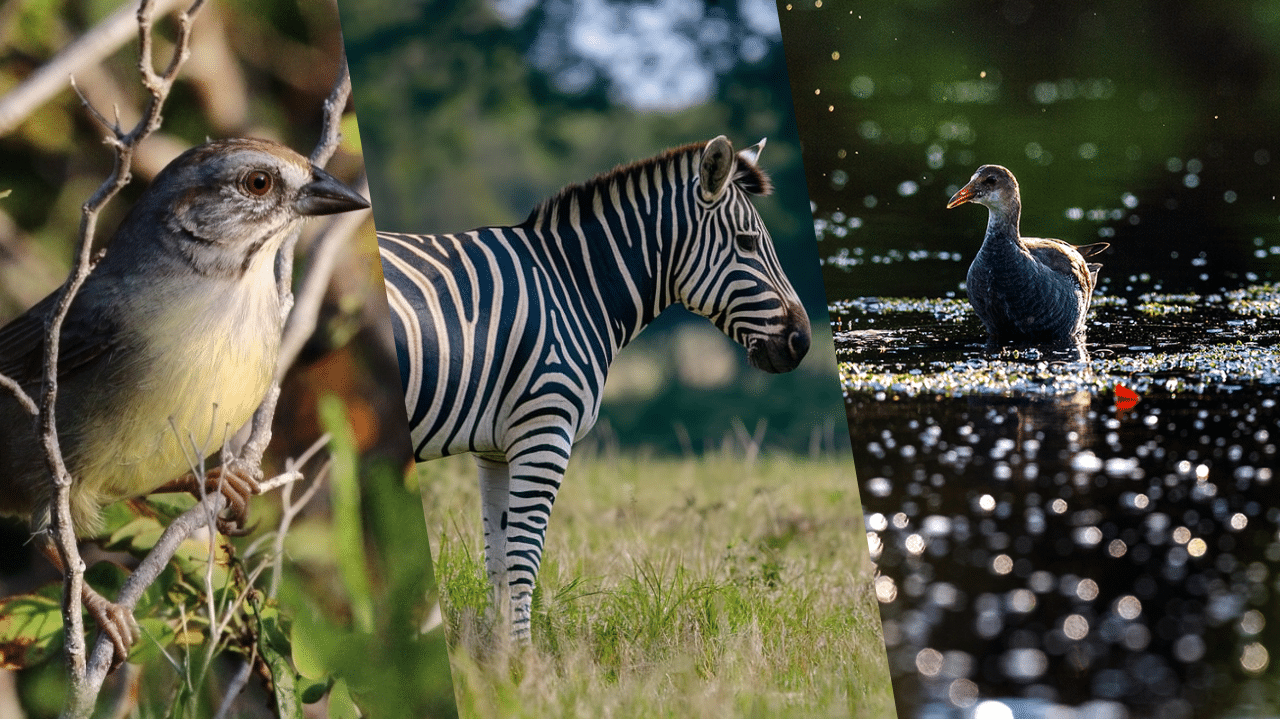
The last letter of the alphabet delivers some of nature’s most extraordinary creatures.
“Z” animals command attention through their rarity and striking adaptations.
From the thundering hooves of Zebras painting Africa’s plains with their unmistakable stripes to the stealthy Zorillas unleashing the animal kingdom’s most potent scent defense, these species defy ordinary expectations.
The Zebra Shark’s dramatic transformation from striped juvenile to spotted adult mystifies marine biologists, while the high-altitude specialist Zeren gazelle navigates oxygen-thin Tibetan plateaus with specialized lungs.
Even microscopic Zooplankton wield outsized importance, forming the crucial foundation of ocean food chains.
Ready for a sprint through the animal kingdom’s most unusual alphabetical corner? Let’s unlock the secrets of nature’s “Z” team.
Most Popular or Widely Known Animals
1. Zebra
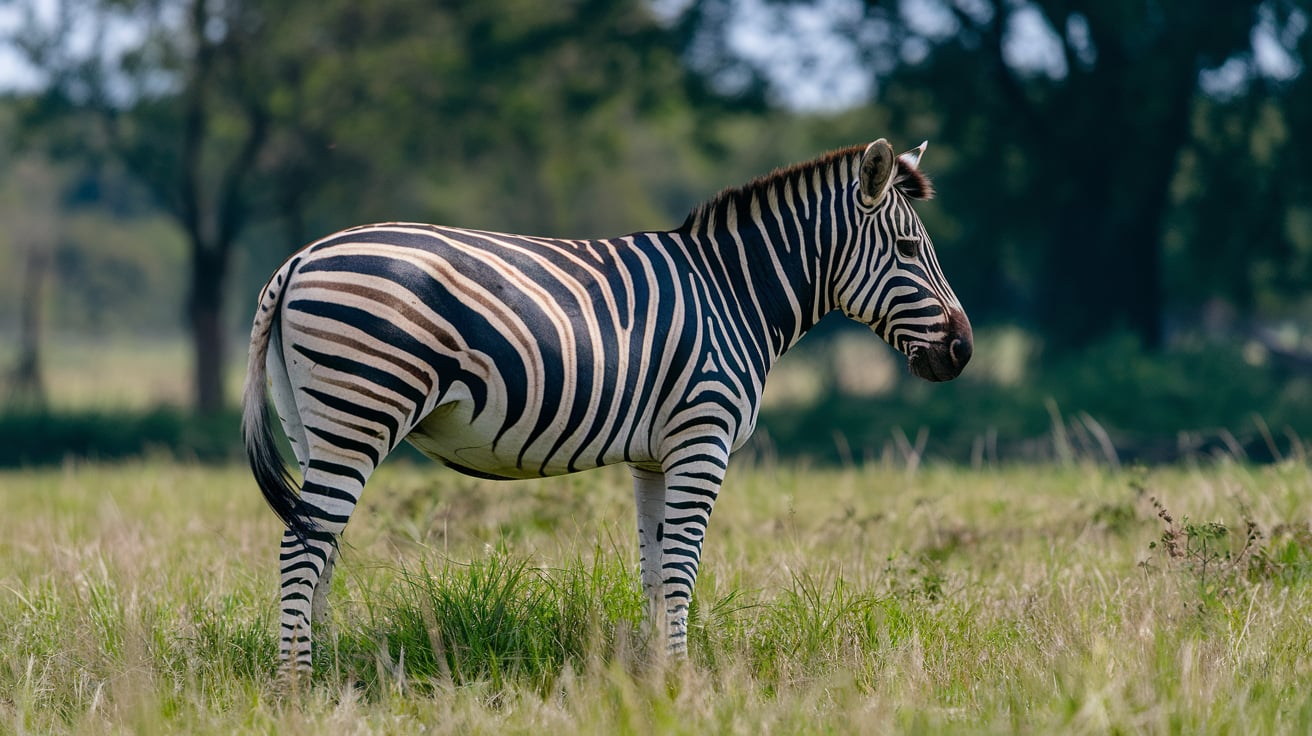
The Zebra has a white body adorned with distinctive black stripes, each pattern unique like a fingerprint, and a flowing mane along its neck.
It possesses powerful legs built for sustained running and sharp hooves that serve as effective weapons against predators.
| Scientific Name | Equus quagga (Plains Zebra) |
| Origin | Africa |
| Habitat | Grasslands and savannas across eastern and southern Africa |
| Fun Fact | Their stripes may confuse biting flies, reducing parasite attacks. |
2. Zebu
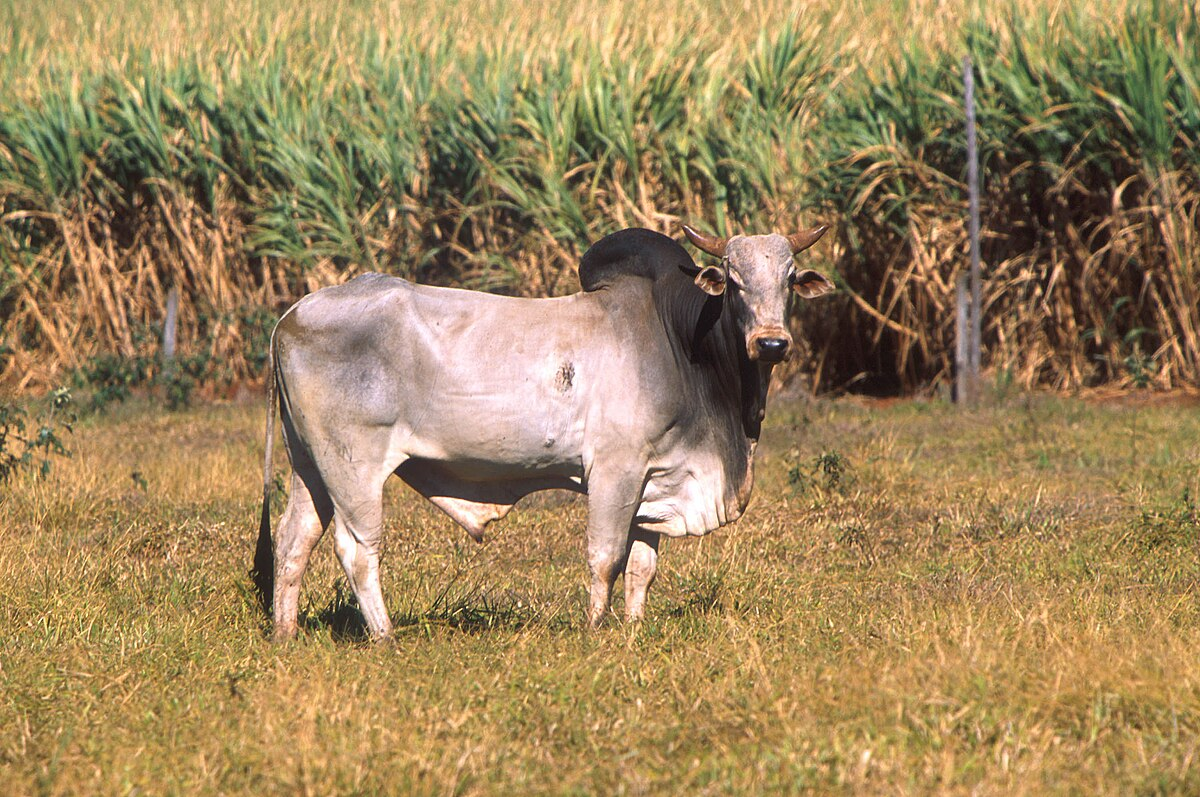
The Zebu is a distinctive cattle breed with a prominent shoulder hump, loose dewlap skin under its neck, and upward-pointing horns.
It has large, drooping ears and a coat that can range from white to gray, red, or black.
| Scientific Name | Bos indicus |
| Origin | South Asia |
| Habitat | Agricultural regions across India, Brazil, and other tropical countries |
| Fun Fact | Their sweat glands are more efficient than European cattle, allowing them to thrive in intense heat. |
3. Zorilla
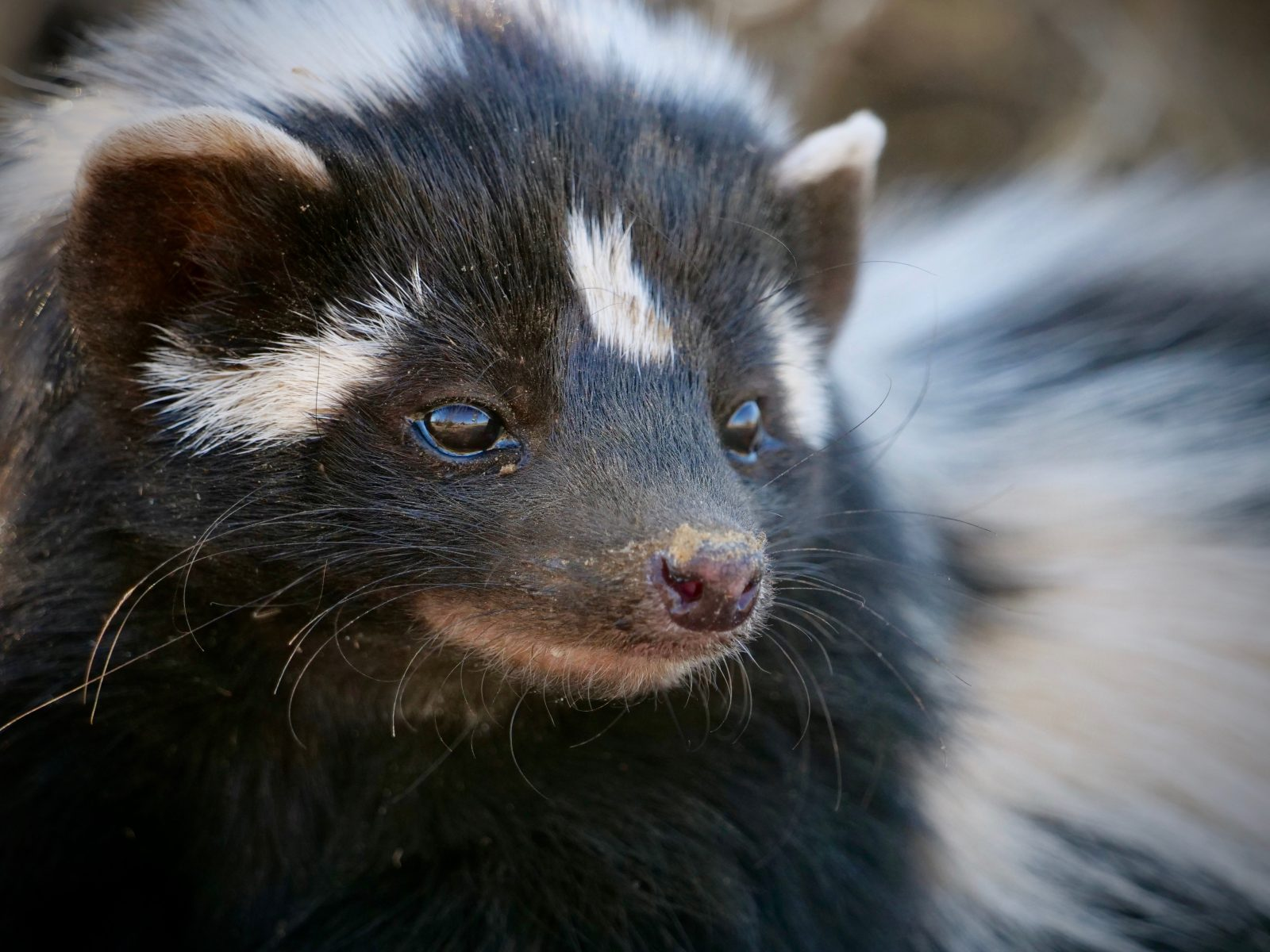
The Zorilla resembles a skunk with black fur featuring distinctive white stripes from head to tail and a bushy, white-tipped tail.
It possesses powerful anal glands that can spray foul-smelling liquid with remarkable accuracy up to several feet away.
| Scientific Name | Ictonyx striatus |
| Origin | Africa |
| Habitat | Grasslands, woodlands, and scrublands across sub-Saharan Africa |
| Fun Fact | Its spray is more potent than a skunk’s and can temporarily blind predators. |
4. Zebra Shark
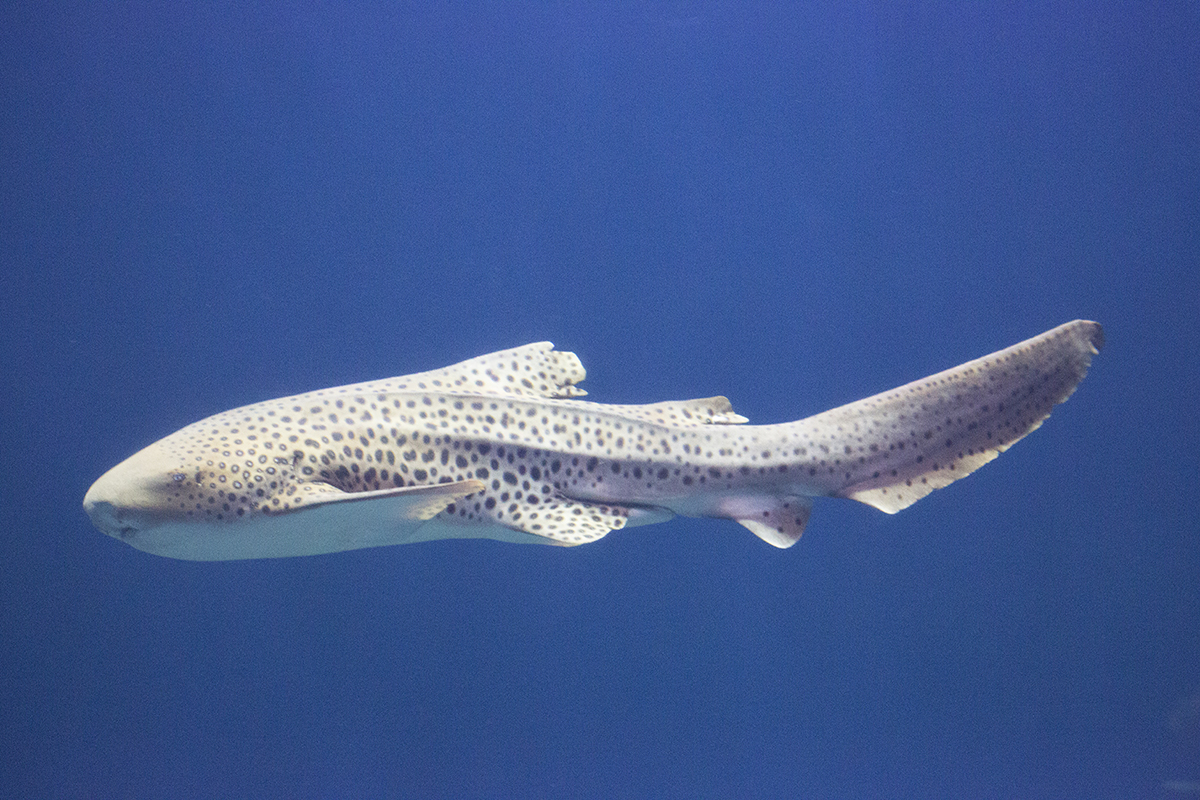
The Zebra Shark has a cylindrical body with a distinctive pattern that changes from stripes to spots as it ages, and five prominent ridges running along its body.
It possesses a broad, flat head with barbels near its nostrils and a long, muscular tail used for powerful swimming thrusts.
| Scientific Name | Stegostoma tigrinum |
| Origin | Indo-Pacific region |
| Habitat | Coral reefs and sandy bottoms in tropical waters |
| Fun Fact | Females can reproduce without males through parthenogenesis when isolated. |
5. Zebra Finch
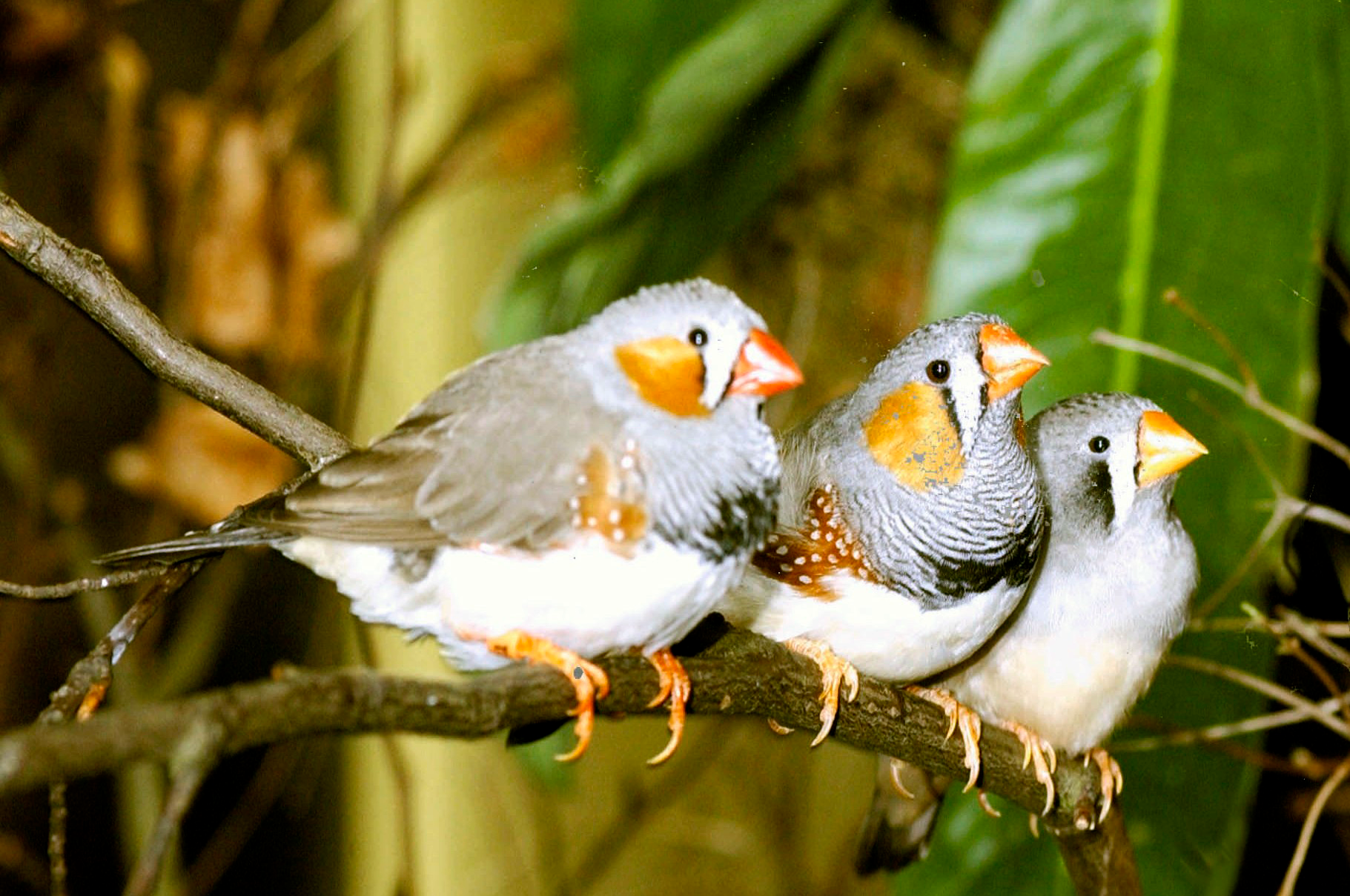
The Zebra Finch is a small bird with a bright orange beak, distinctive black and white striped throat, and chestnut-colored flanks with white spots.
It has a musical call and remarkable vocal learning abilities, making it a popular subject for neuroscience research.
| Scientific Name | Taeniopygia guttata |
| Origin | Australia |
| Habitat | Grasslands and open woodlands of Australia |
| Fun Fact | Males learn their songs during a critical period of development, similar to human language learning. |
6. Zokor
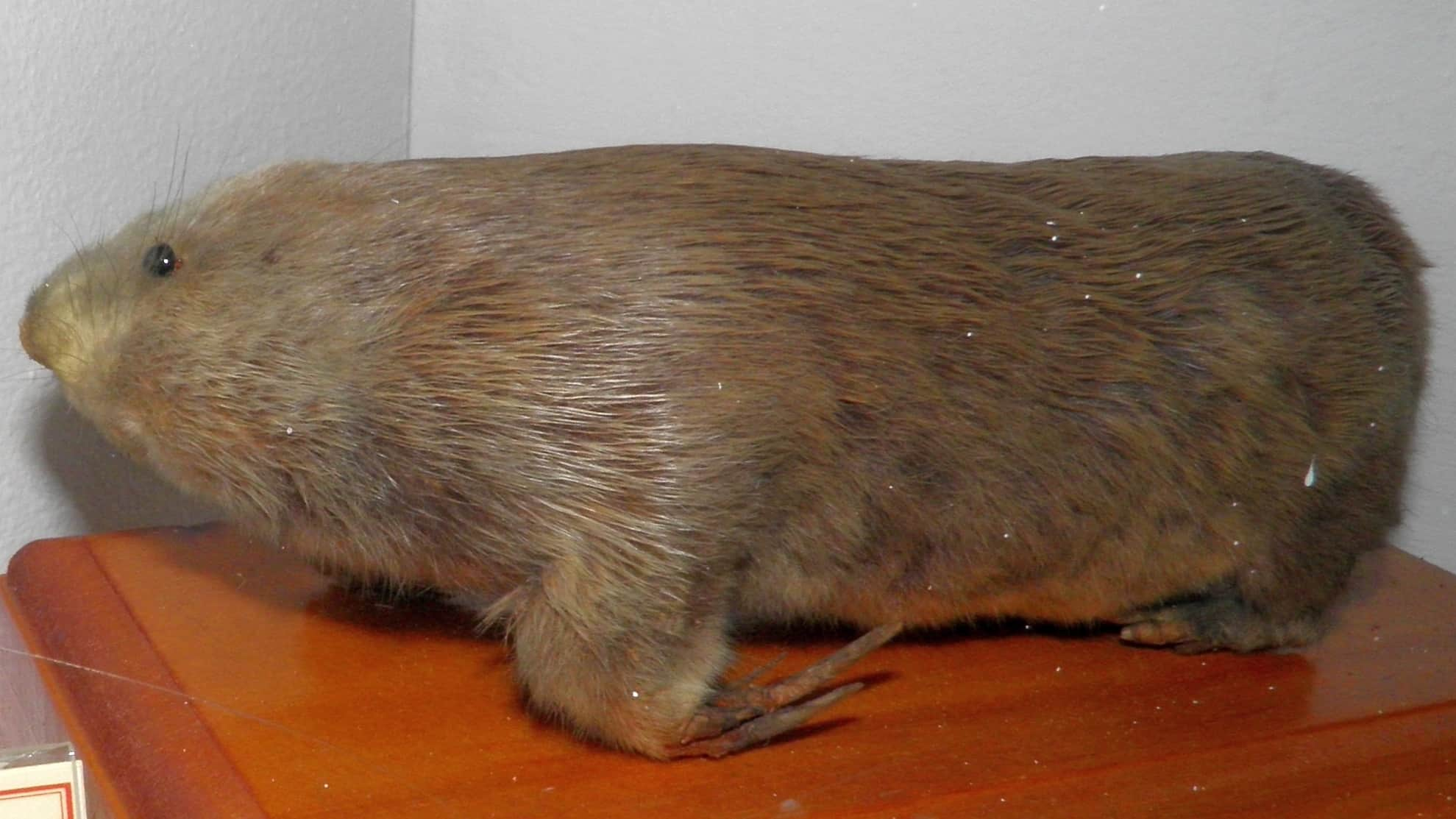
The Zokor is a burrowing rodent with a cylindrical body, velvety fur, reduced eyes, and powerful front limbs with large claws adapted for digging.
It has specialized teeth for gnawing through roots and small, nearly invisible ears suited to its underground lifestyle.
| Scientific Name | Myospalax spp. |
| Origin | Asia |
| Habitat | Grasslands and farmlands across China, Mongolia, and parts of Russia |
| Fun Fact | They create vast underground tunnel systems stretching hundreds of meters. |
7. Zebra Dove
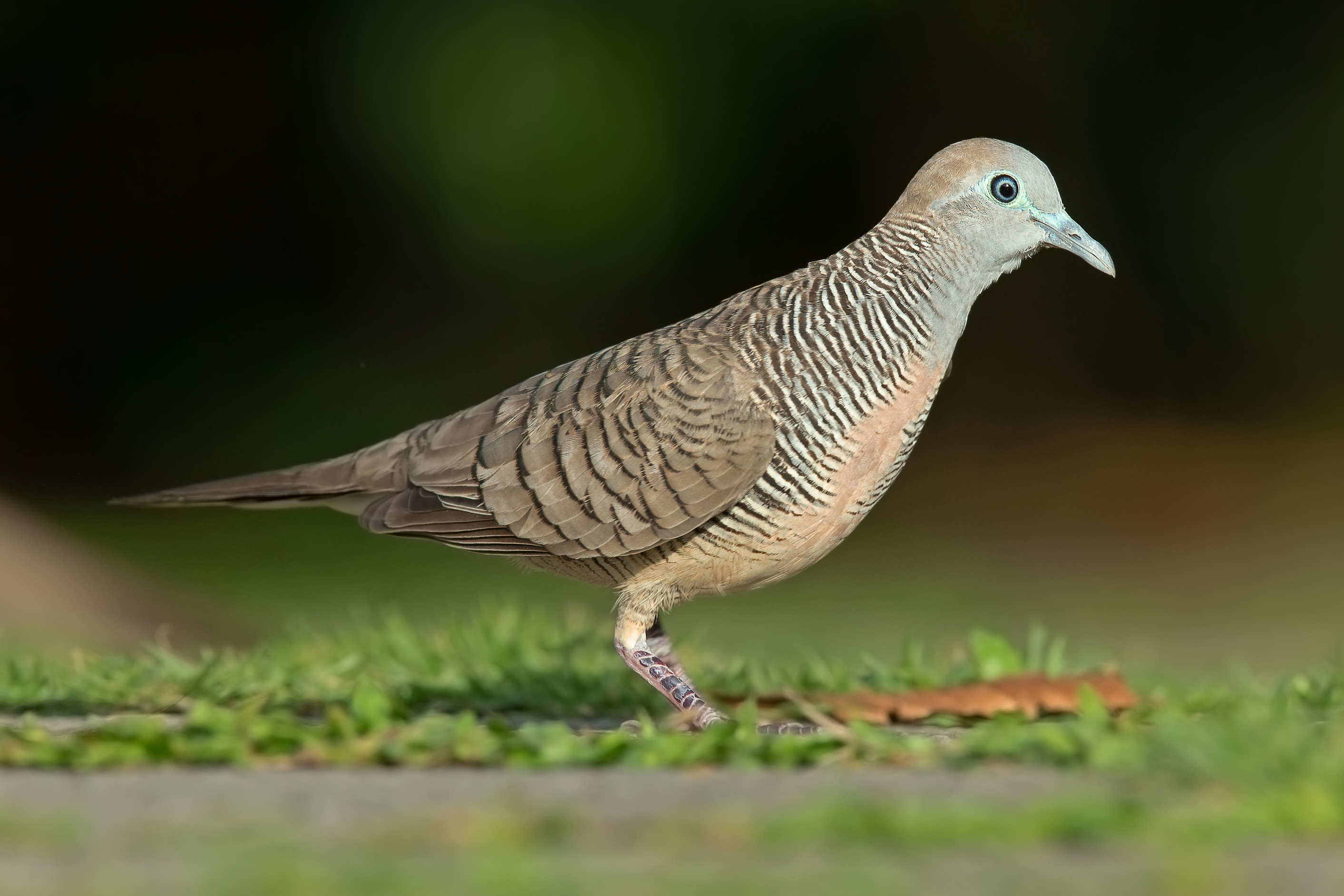
The Zebra Dove has a light brown body with fine black barring on its chest and back, creating a zebra-like pattern, and a bluish-gray head.
It has a slender build, long tail, and produces a distinctive rhythmic cooing call often used in singing competitions.
| Scientific Name | Geopelia striata |
| Origin | Southeast Asia |
| Habitat | Open woodlands, gardens, and urban areas across Southeast Asia and introduced to Hawaii |
| Fun Fact | In Thailand, their melodious calls are so valued that singing competitions are regularly held. |
8. Zebra Swallowtail Butterfly
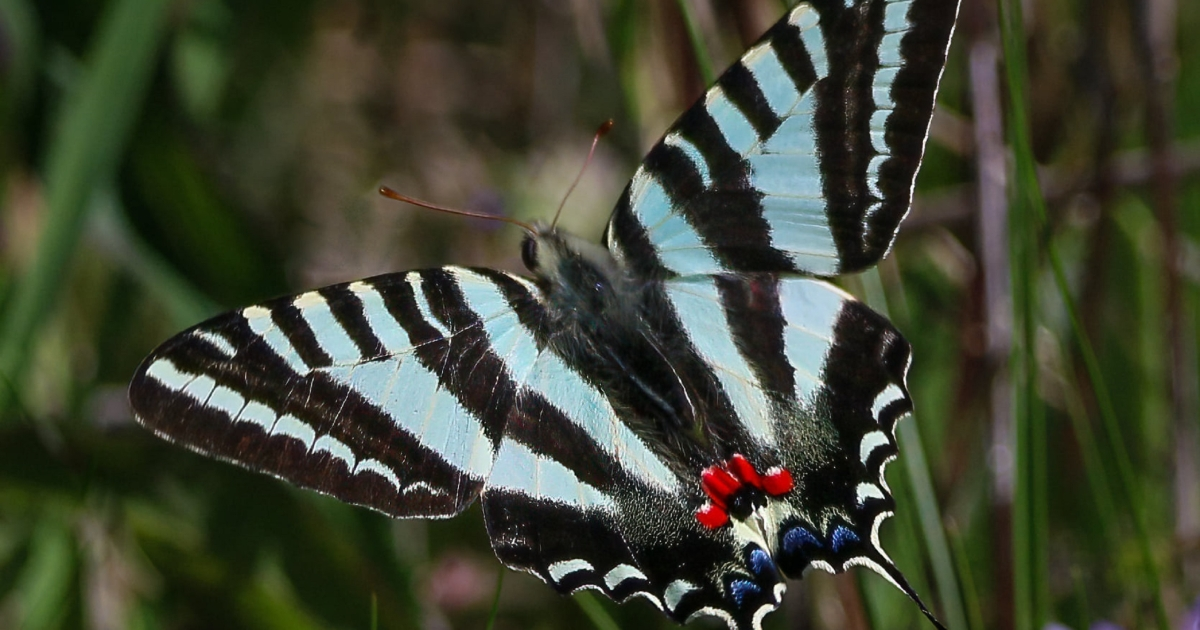
The Zebra Swallowtail has distinctive black and white striped wings with long, sword-like tails and small red spots near the wing edges.
It possesses exceptionally long forewings and specialized sensory organs on its feet that can taste potential host plants.
| Scientific Name | Protographium marcellus |
| Origin | North America |
| Habitat | Deciduous forests and river valleys of eastern United States |
| Fun Fact | Its caterpillars feed exclusively on pawpaw trees and absorb toxins that make them unpalatable to predators. |
9. Zebra Spider
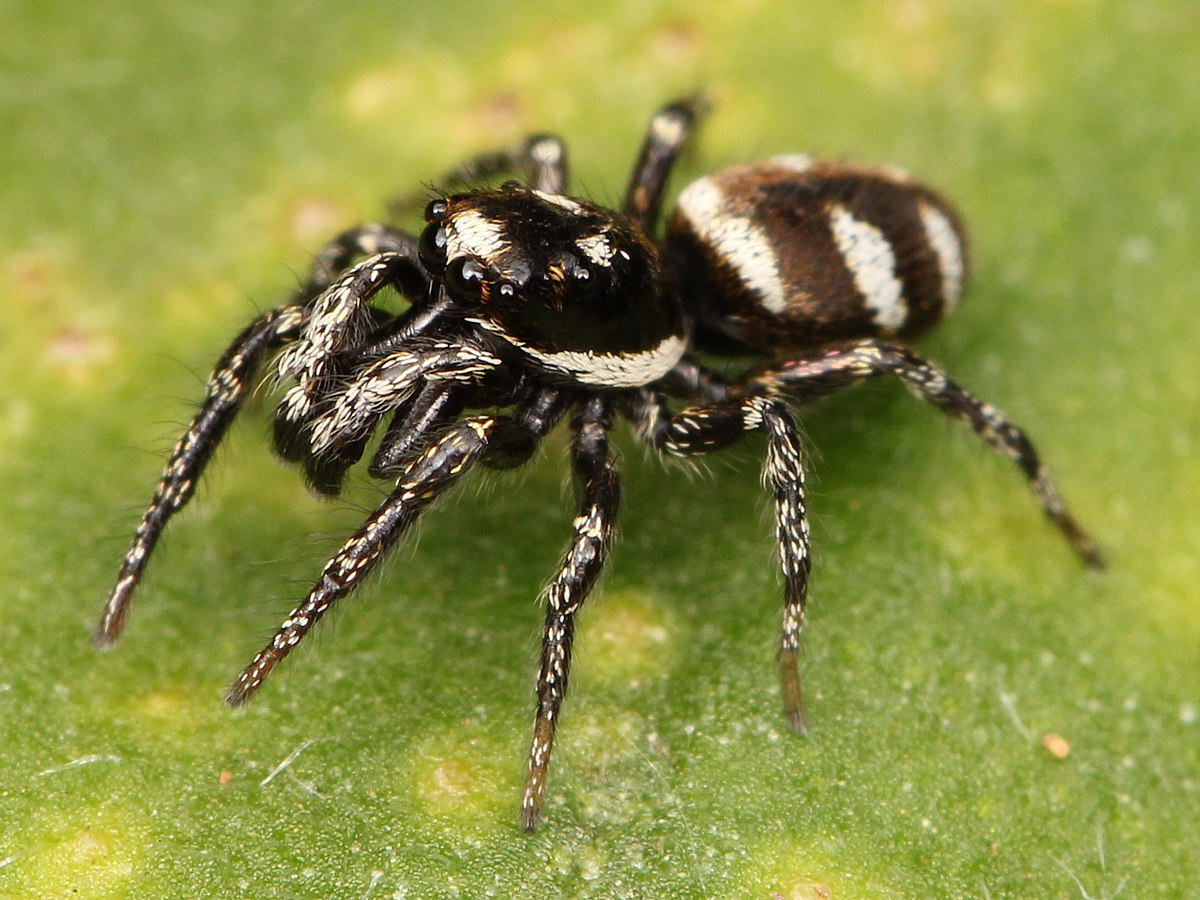
The Zebra Spider has a compact body with black and white stripes, large forward-facing eyes that provide exceptional vision, and furry front legs.
It lacks a web for catching prey, instead using powerful legs to jump up to 25 times its body length to ambush insects.
| Scientific Name | Salticus scenicus |
| Origin | Europe and North America |
| Habitat | Walls, fences, and tree trunks in urban and rural environments |
| Fun Fact | They attach a silk safety line before jumping to prevent falling injuries. |
10. Zebra Mussel
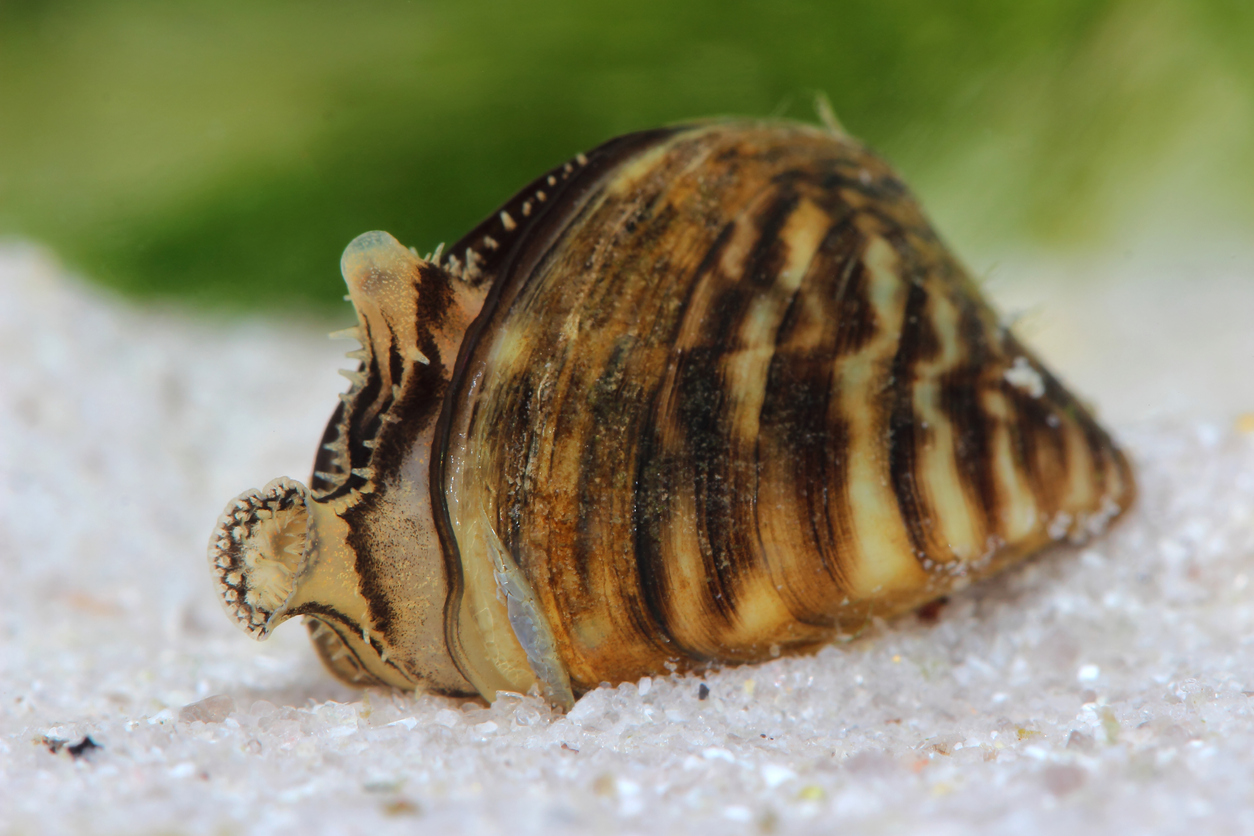
The Zebra Mussel has a triangular shell with alternating dark and light brown stripes, sharp edges, and a flat underside that attaches firmly to surfaces.
It possesses byssal threads that anchor it to hard surfaces and efficient filter-feeding mechanisms that strain microscopic food from water.
| Scientific Name | Dreissena polymorpha |
| Origin | Eastern Europe |
| Habitat | Freshwater lakes and rivers across Europe and North America (invasive) |
| Fun Fact | One mussel can filter up to one liter of water daily, drastically altering invaded ecosystems. |
11. Zebra Pleco
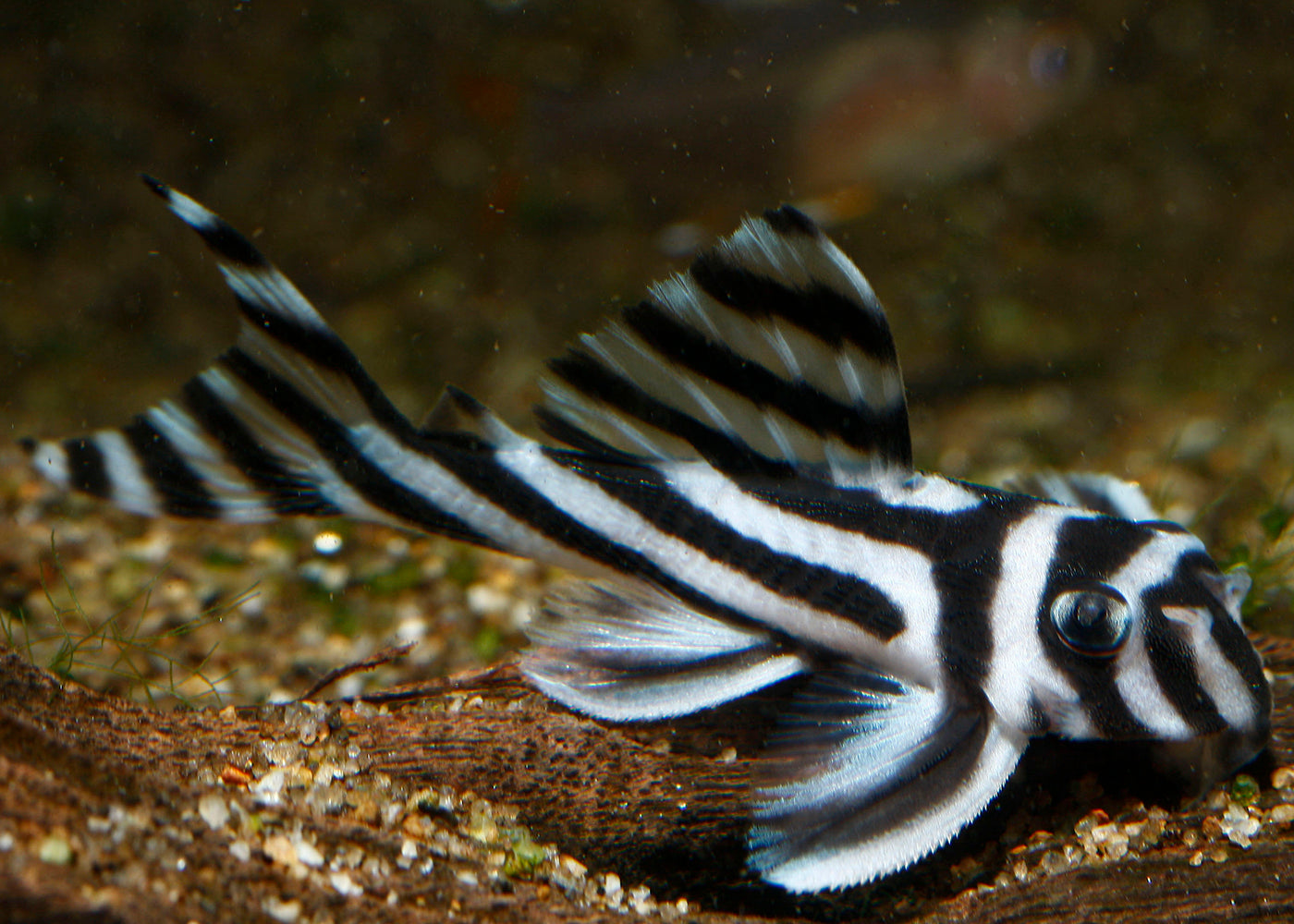
The Zebra Pleco is a striking freshwater fish with a black body adorned with bright white vertical stripes and an arched, flat underside.
It has specialized suckermouth lips for clinging to surfaces and scraping algae, and defensive fin spines that lock into place when threatened.
| Scientific Name | Hypancistrus zebra |
| Origin | South America |
| Habitat | Rocky areas of the Xingu River in Brazil |
| Fun Fact | Due to dam construction threatening its habitat, this critically endangered fish is now heavily protected. |
12. Zebra Seahorse
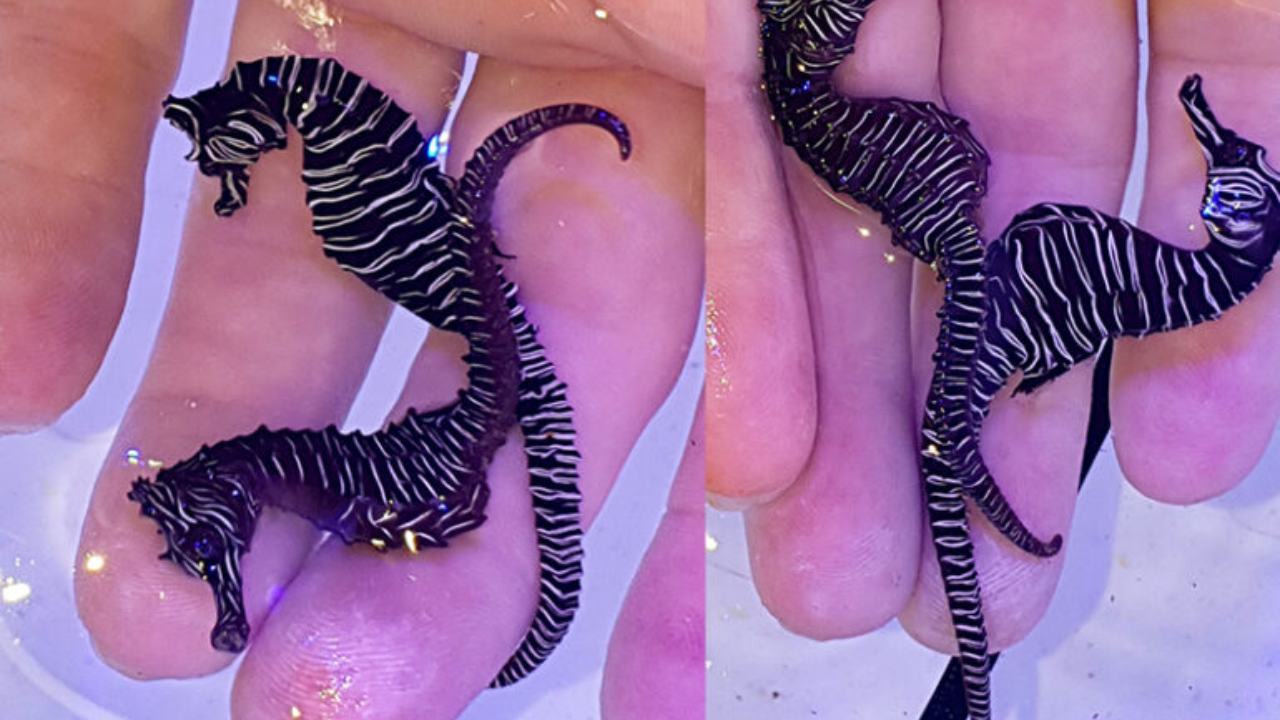
The Zebra Seahorse has a small, elongated body covered in white and black bands, a curved snout, and a prehensile tail used to anchor itself to corals or seagrass.
It swims upright using a small dorsal fin that beats rapidly, and males possess a specialized brood pouch where they carry and nurture developing young.
| Scientific Name | Hippocampus zebra |
| Origin | Western Pacific |
| Habitat | Coral reefs and seagrass beds in Indonesia and Philippines |
| Fun Fact | The male carries and gives birth to up to 100 young after the female deposits eggs in his pouch. |
13. Zapata Rail
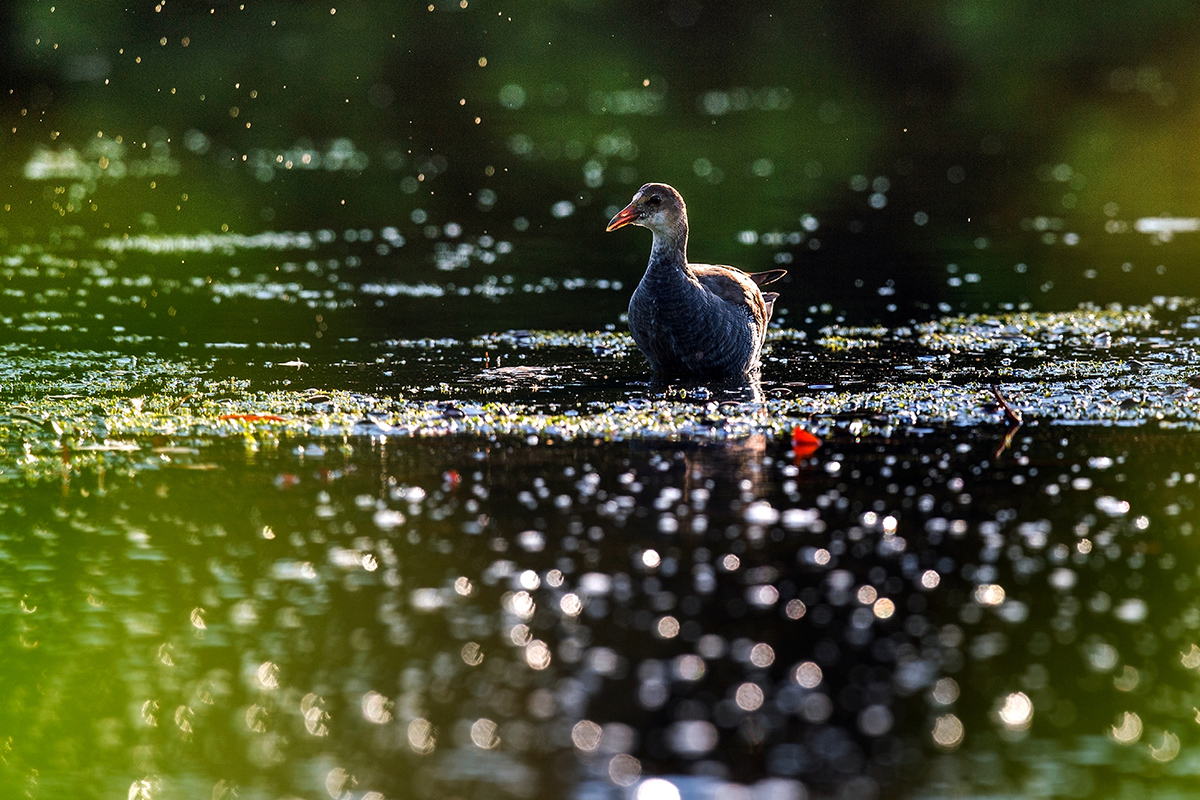
The Zapata Rail is an elusive bird with dark brown upperparts, bluish-gray underparts, and a distinctive red eye and bill.
It has long toes for walking on floating vegetation and short, rounded wings reflecting its limited flying abilities.
| Scientific Name | Cyanolimnas cerverai |
| Origin | Cuba |
| Habitat | Dense sawgrass marshes of the Zapata Swamp in Cuba |
| Fun Fact | So rare that it’s been sighted only a handful of times since its discovery in 1927. |
14. Zebra Duiker
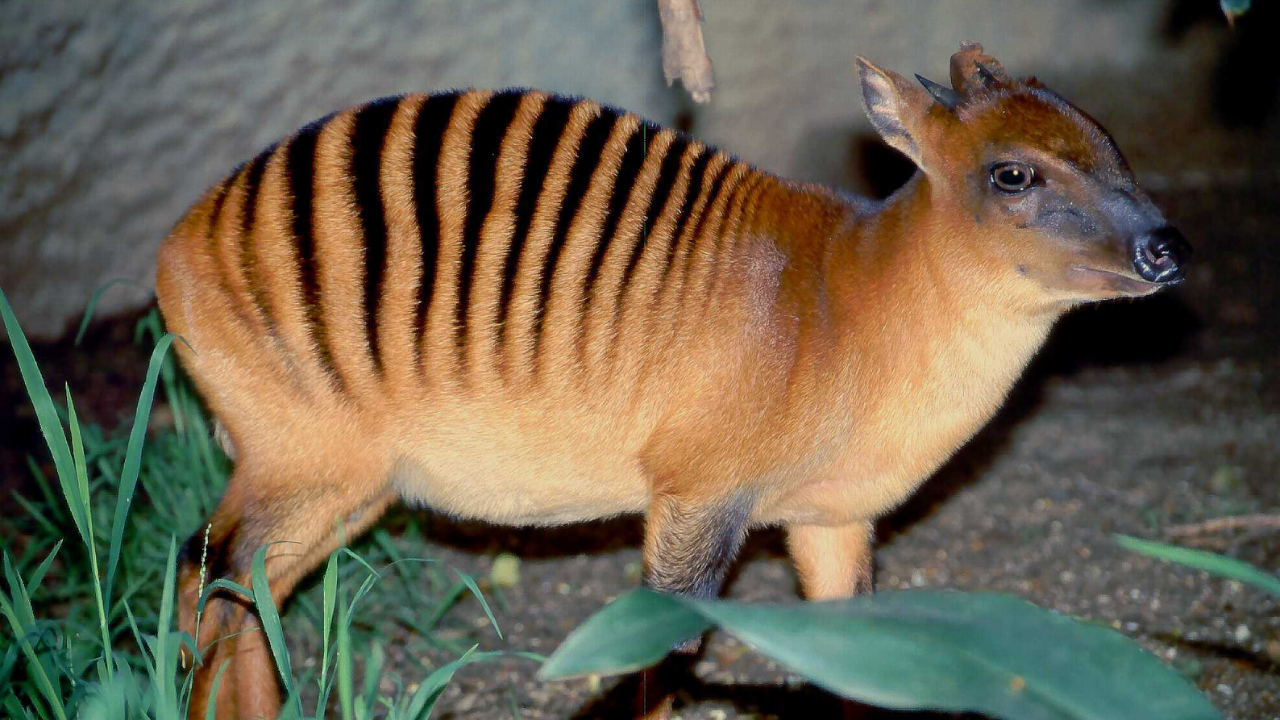
The Zebra Duiker is a small antelope with a rich chestnut coat marked by distinctive black stripes across its back, and short, straight horns on both males and females.
It has large, dark eyes, a glandular muzzle that leaves scent marks on vegetation, and specialized hooves for navigating dense forest floors.
| Scientific Name | Cephalophus zebra |
| Origin | West Africa |
| Habitat | Dense rainforests of Liberia, Sierra Leone, and Ivory Coast |
| Fun Fact | They communicate through a network of trails marked with secretions from facial glands. |
15. Zebra-tailed Lizard
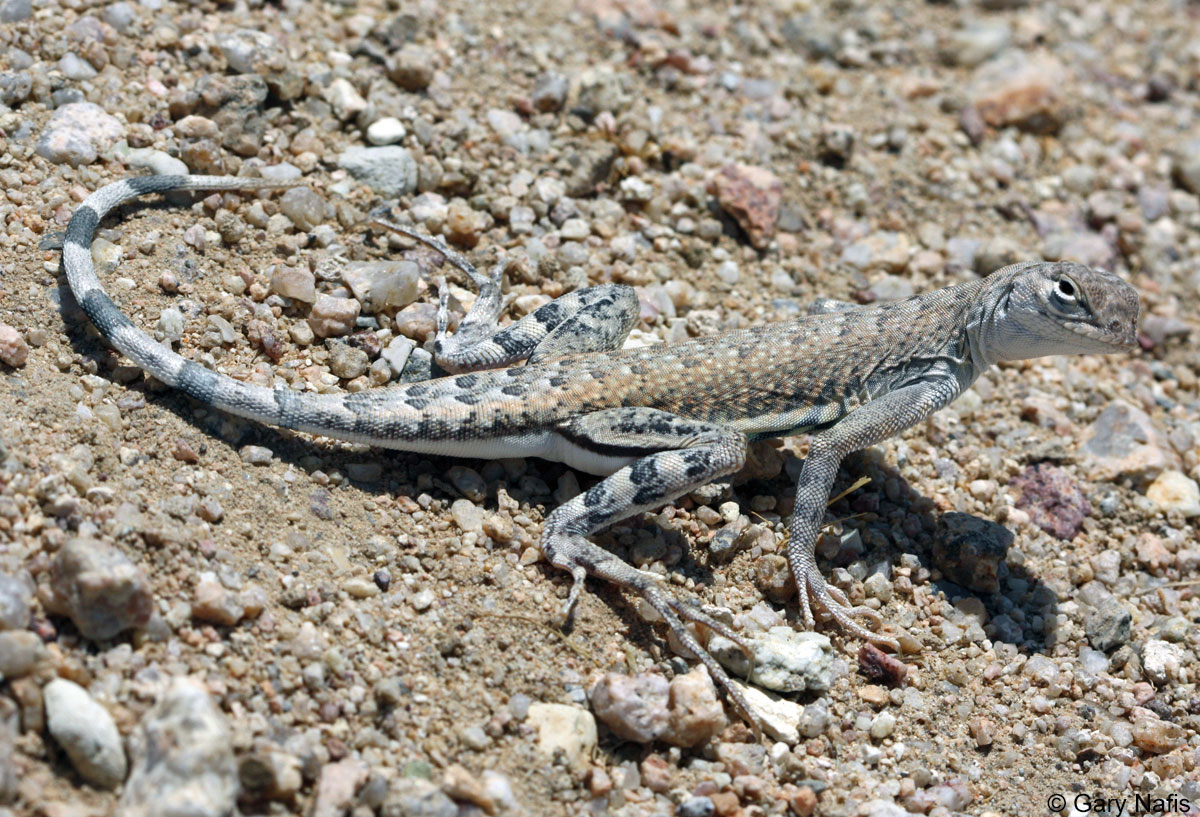
The Zebra-tailed Lizard has a slender body with mottled gray-brown coloration, and a distinctive black-and-white banded underside of its tail that it curls over its back when running.
It possesses exceptionally long hind legs for reaching speeds up to 18 mph, and specialized scales on its feet for running across loose sand.
| Scientific Name | Callisaurus draconoides |
| Origin | North America |
| Habitat | Desert washes and sandy flats in southwestern United States and Mexico |
| Fun Fact | It can run on its hind legs, reaching speeds that let it sprint across water surfaces. |
16. Zonkey
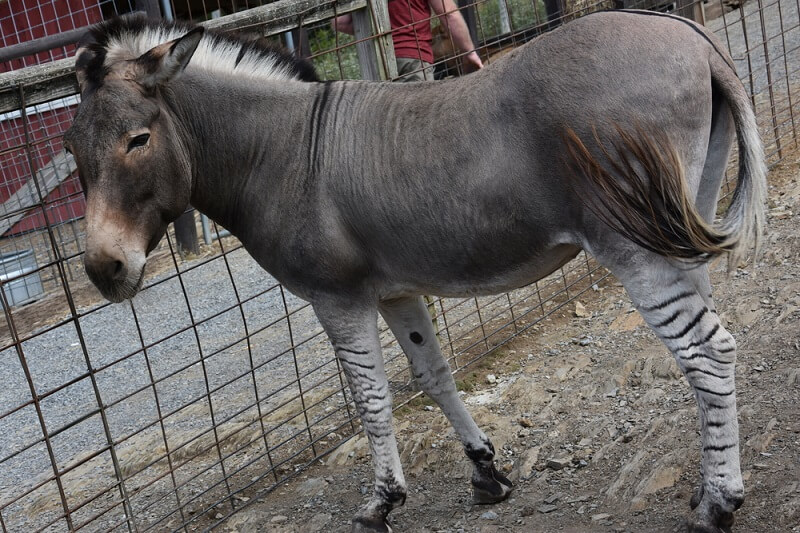
The Zonkey is a hybrid animal with features of both parent species, typically displaying a donkey’s body shape with zebra-striped legs and sometimes partial striping on the body.
It possesses the shorter, more upright mane of a donkey combined with the alertness and partially striped coat pattern inherited from its zebra parent.
| Scientific Name | Equus zebra × Equus asinus |
| Origin | Captivity/Managed breeding |
| Habitat | Zoos, wildlife reserves, and specialty breeding farms |
| Fun Fact | Most zonkeys are sterile due to the differing chromosome numbers between parent species. |
17. Zorse
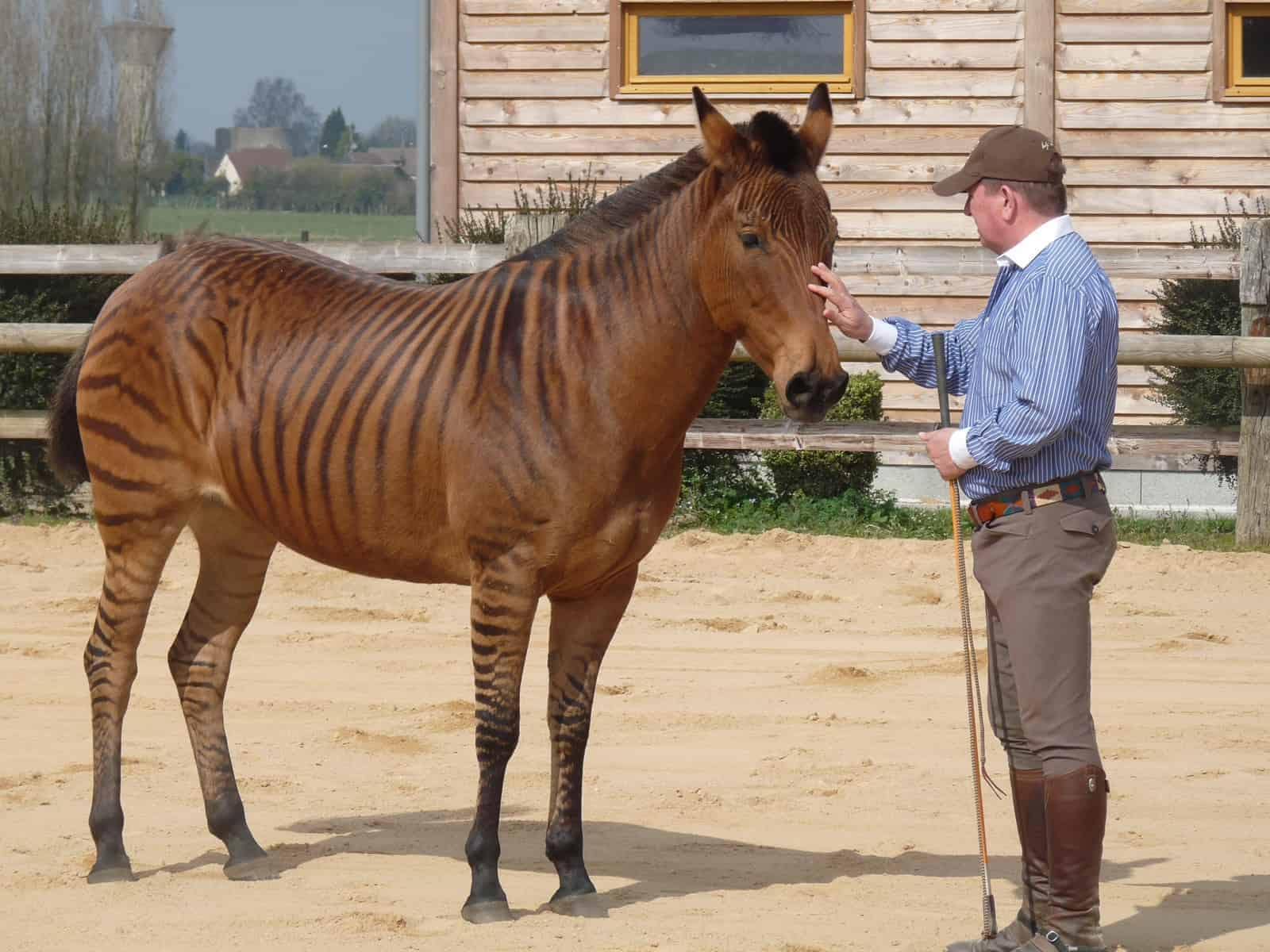
The Zorse is a zebra-horse hybrid with a horse-like body and partial zebra striping, most prominently on the legs and sometimes extending to the neck and torso.
It combines the greater size and strength of a horse with some of the hardiness and distinctive patterning of a zebra.
| Scientific Name | Equus zebra × Equus caballus |
| Origin | Captivity/Managed breeding |
| Habitat | Specialty farms, safari parks, and private collections |
| Fun Fact | Unlike most hybrids, some female zorses can reproduce, though male zorses remain sterile. |
18. Zenaida Dove
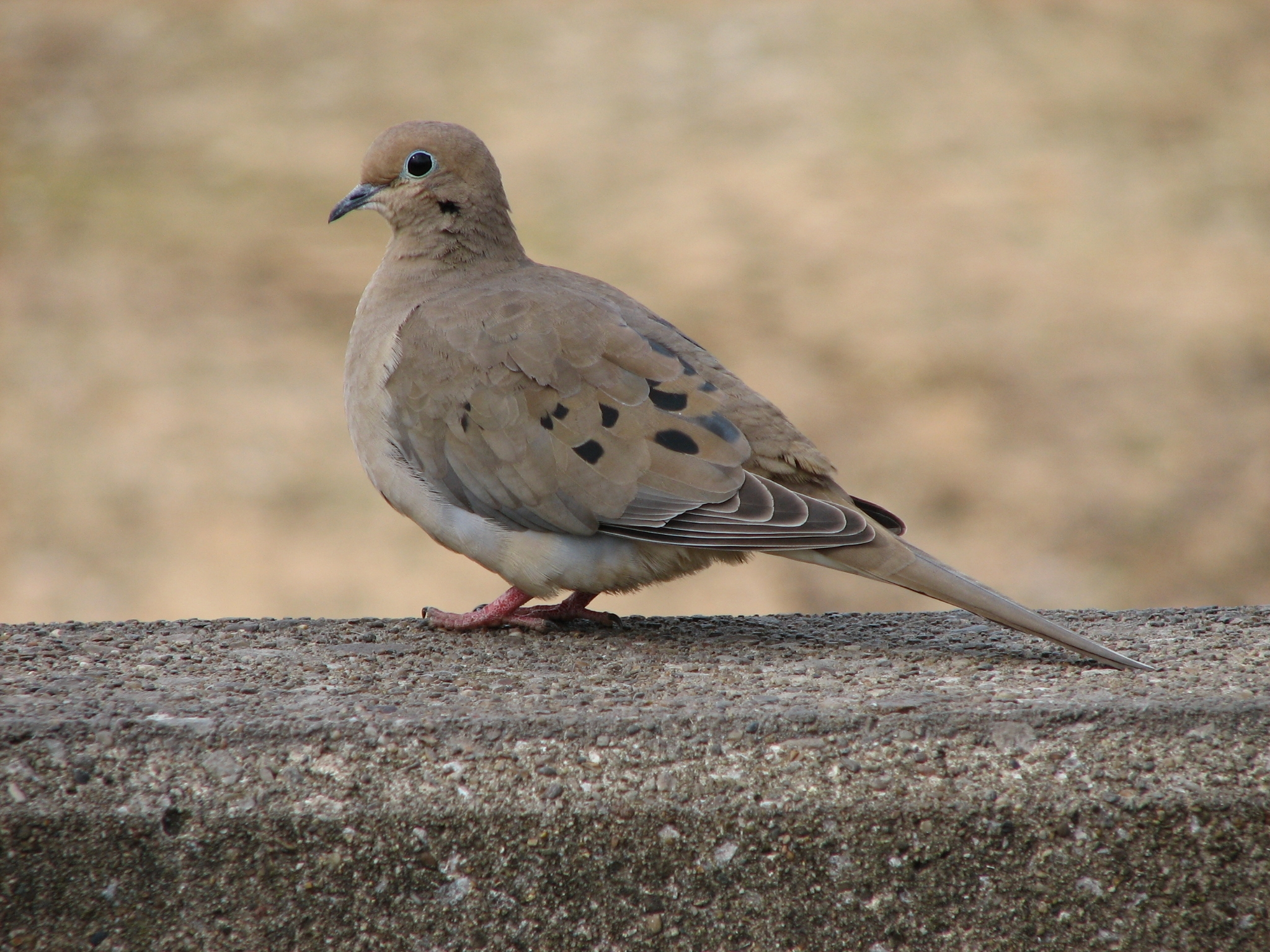
The Zenaida Dove has a soft brown body, iridescent patches on its neck, black spots on its wings, and a distinctive white crescent under each eye.
It produces a soft, mournful cooing call and displays a distinctive nodding motion while walking.
| Scientific Name | Zenaida aurita |
| Origin | Caribbean and Americas |
| Habitat | Dry forest edges, scrubland, and agricultural areas across the Caribbean islands and parts of Florida |
| Fun Fact | In Barbados, these doves have learned to drink sugar water from hummingbird feeders. |
19. Zebra Turkeyfish
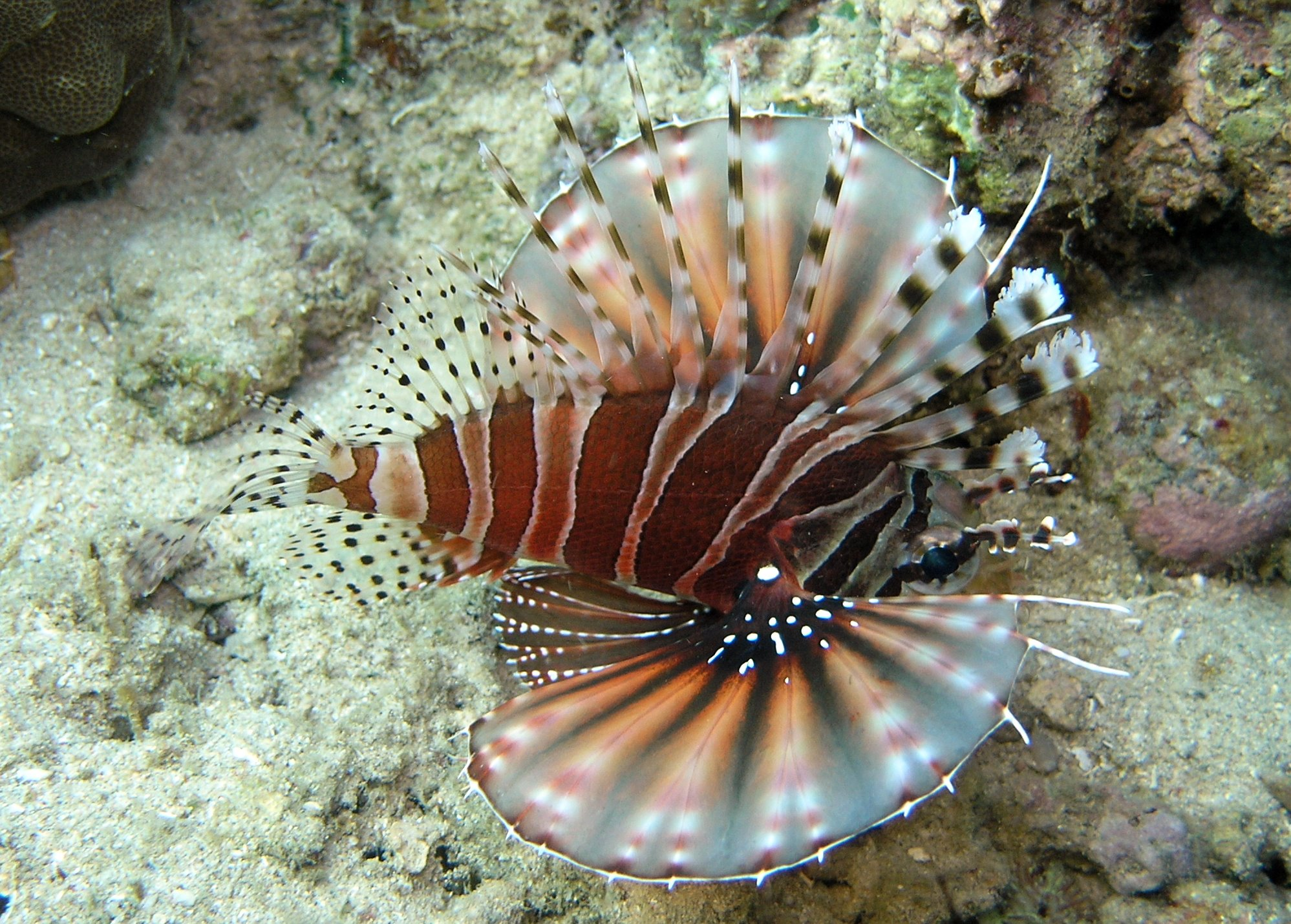
The Zebra Turkeyfish is a striking lionfish with red and white zebra-like bands across its body, elaborate fan-like pectoral fins, and venomous dorsal spines that stand erect when threatened.
It moves with slow, hovering motions using nearly transparent pectoral fins that resemble delicate fans.
| Scientific Name | Dendrochirus zebra |
| Origin | Indo-Pacific region |
| Habitat | Coral reefs and lagoons across the tropical Pacific and Indian Oceans |
| Fun Fact | Their venomous spines are used defensively, while their fan-like fins are used to corner small fish into confined spaces. |
20. Zanzibar Red Colobus
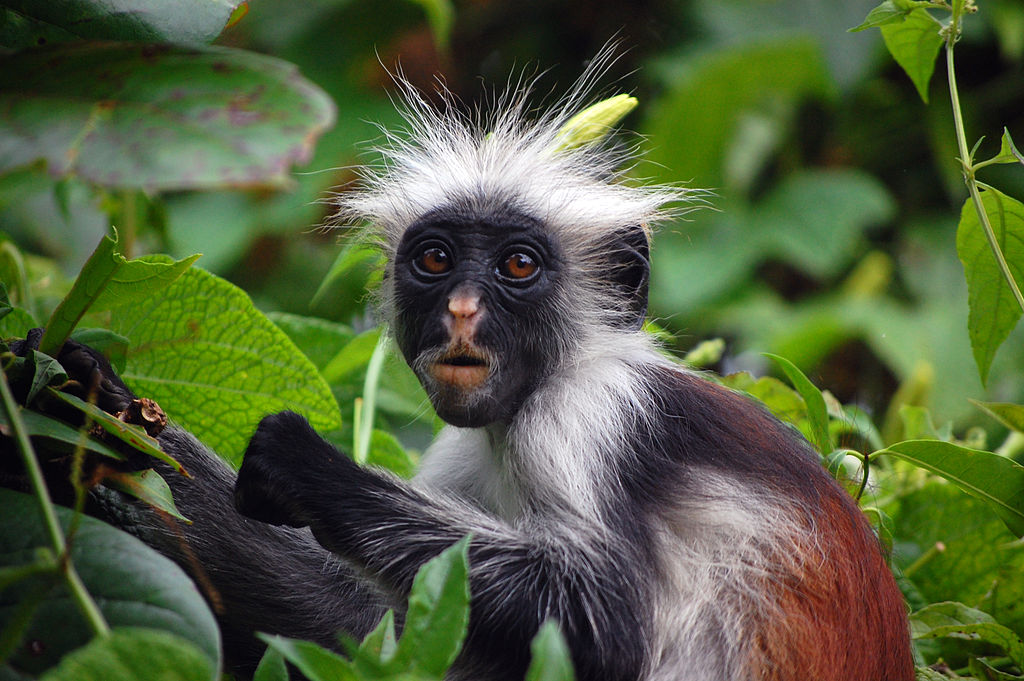
The Zanzibar Red Colobus has a striking appearance with a reddish-brown back, black limbs, and face, and a distinctive crown of white hair.
It possesses specialized multi-chambered stomachs for digesting tough leaves and unusually short thumbs adapted to its arboreal lifestyle.
| Scientific Name | Piliocolobus kirkii |
| Origin | Tanzania (Zanzibar) |
| Habitat | Tropical forests and mangroves on Zanzibar island |
| Fun Fact | They can eat leaves containing toxic compounds that would poison most other primates. |
21. Zapata Wren
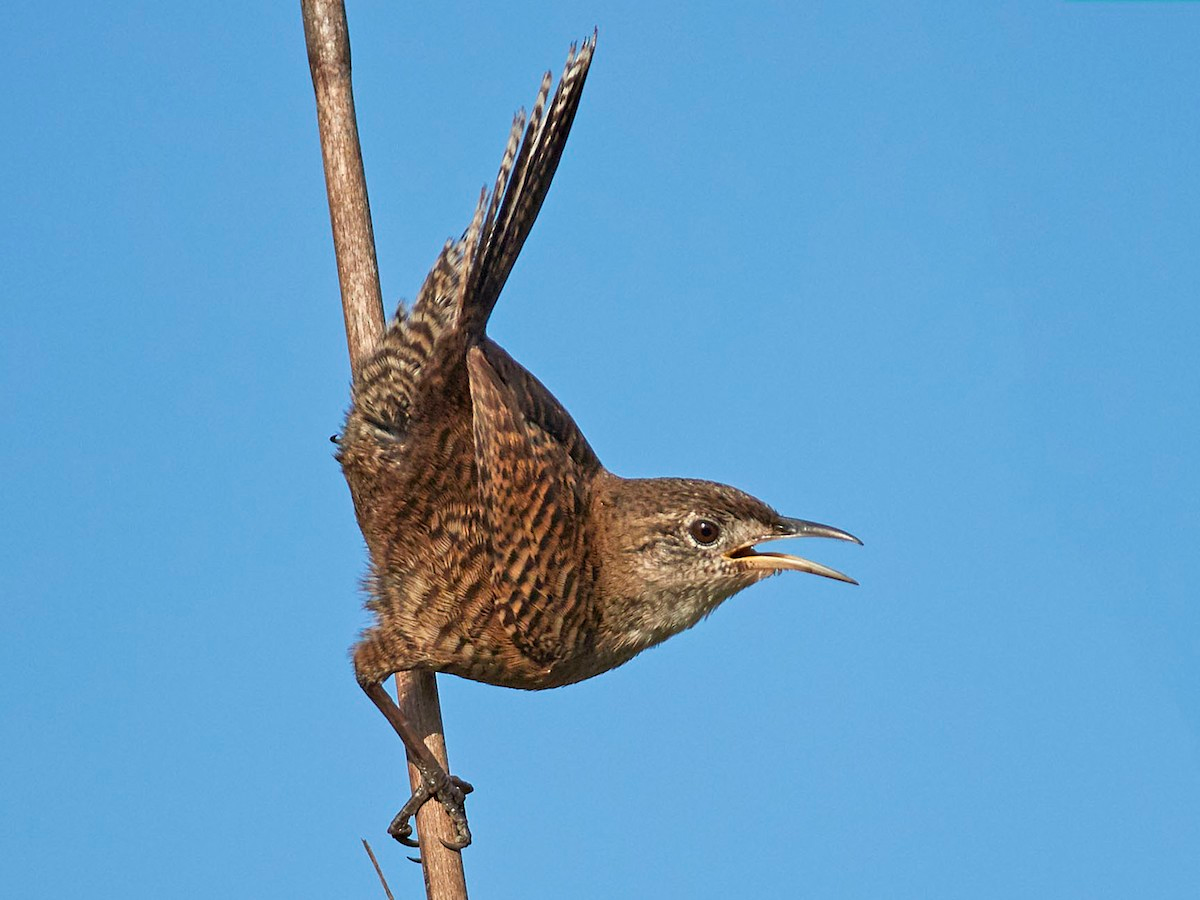
The Zapata Wren is a small, elusive bird with brown plumage, faint barring on its wings and tail, and a pale eyebrow stripe above its eye.
It has a long, slightly curved bill for probing vegetation and specialized feet for clinging to vertical reeds and marsh plants.
| Scientific Name | Ferminia cerverai |
| Origin | Cuba |
| Habitat | Dense sawgrass marshes of the Zapata Swamp |
| Fun Fact | It’s one of Cuba’s most endangered birds, with fewer than 1,500 individuals remaining in the wild. |
22. Zygaspis
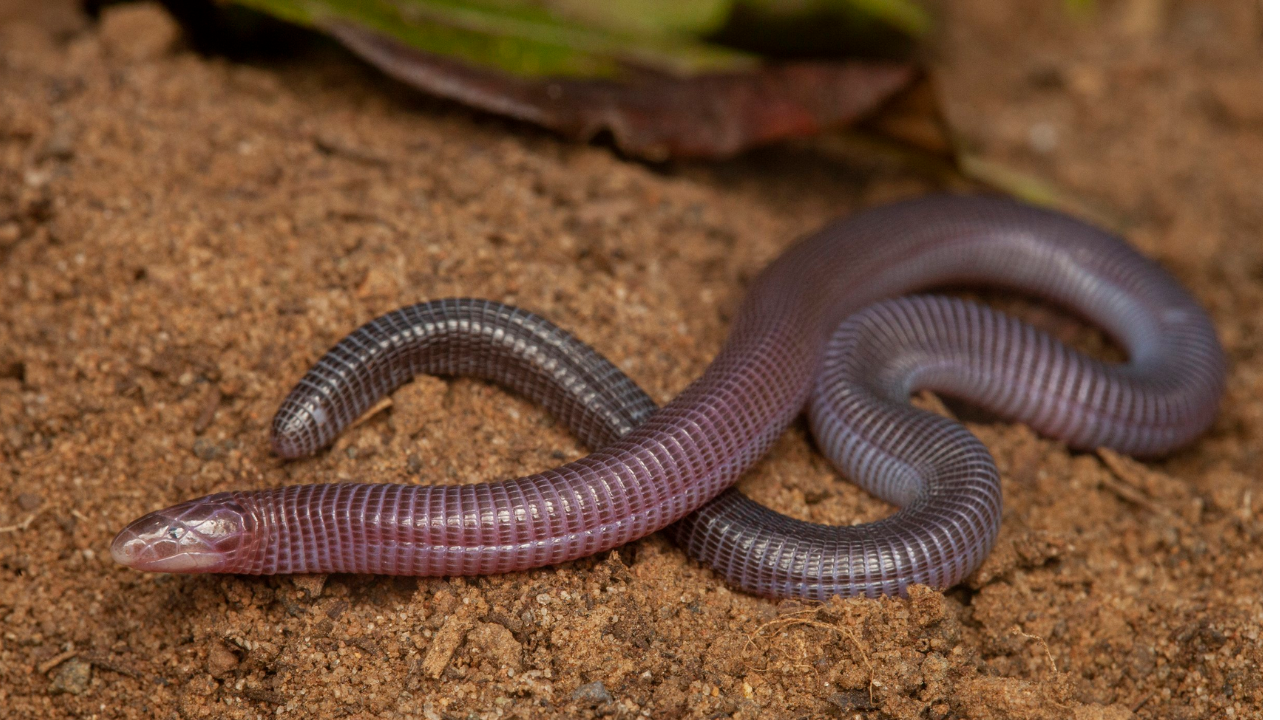
Zygaspis worm lizards have long, limbless bodies with smooth, ringed scales, a blunt burrowing head, and tiny eyes hidden beneath scales.
They use their skulls to dig, have skin adapted for underground breathing, and forked tongues for sensing chemical cues.
| Scientific Name | Zygaspis quadrifrons |
| Origin | Africa |
| Habitat | Loose, sandy soils in savannas and dry woodlands of southern Africa |
| Fun Fact | Despite their name and appearance, they’re neither worms nor lizards, but belong to their own ancient reptile group. |
23. Zebra Moray Eel
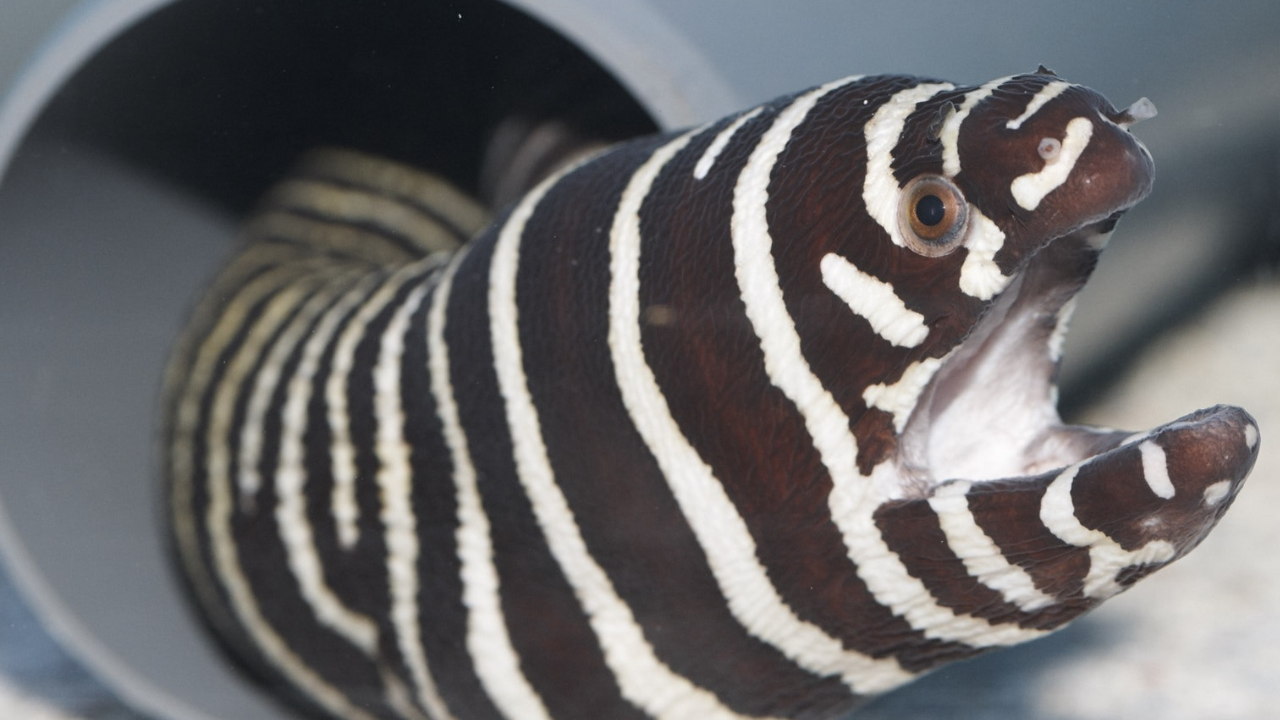
The Zebra Moray Eel has a snake-like body covered with distinctive alternating black and white rings encircling its entire length.
It possesses powerful jaws with specialized blunt teeth for crushing hard-shelled prey and can breathe through a small gill opening behind its head.
| Scientific Name | Gymnomuraena zebra |
| Origin | Indo-Pacific region |
| Habitat | Coral reefs and rocky substrates in tropical waters of the Pacific and Indian Oceans |
| Fun Fact | Unlike most eels that hunt at night, these are primarily daytime hunters of hard-shelled crustaceans. |
24. Zebra Caterpillar
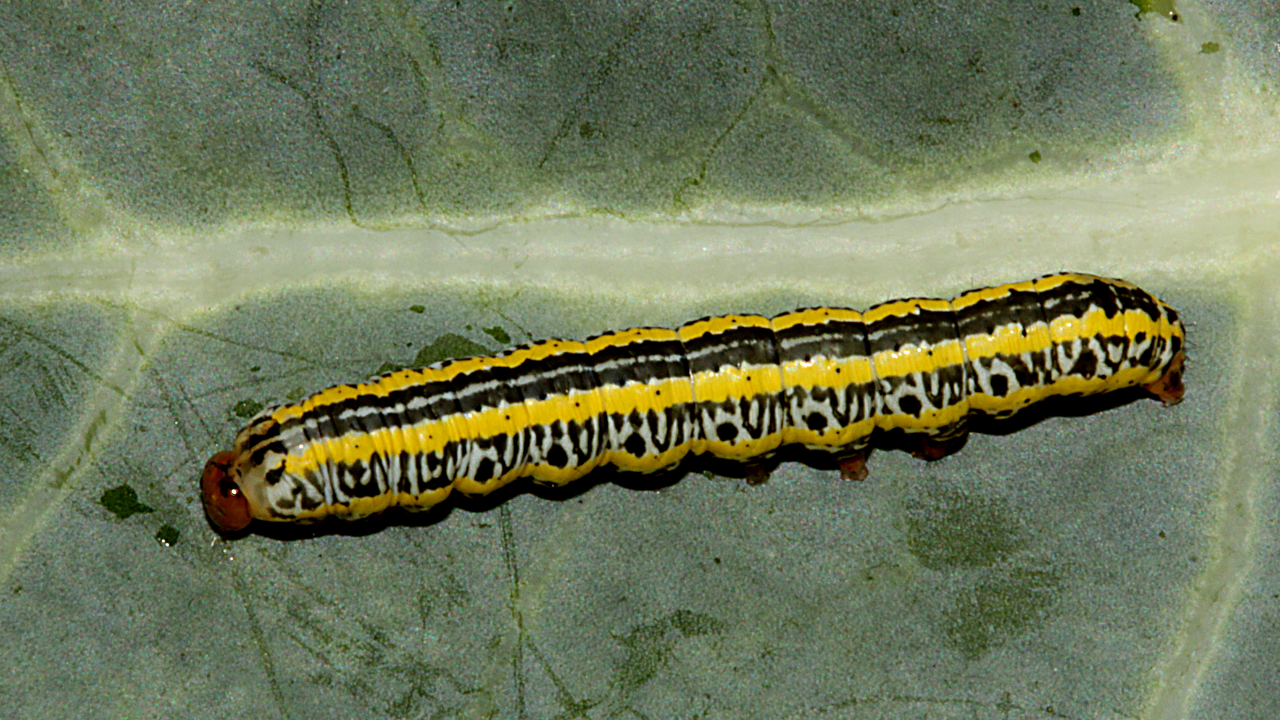
The Zebra Caterpillar has a distinctive appearance with bright yellow and black longitudinal stripes running the length of its body, and sparse hairs projecting from its segments.
It possesses three pairs of true legs near its head, plus five pairs of fleshy prolegs along its abdomen that help it grip plant surfaces.
| Scientific Name | Melanchra picta |
| Origin | North America |
| Habitat | Various habitats where host plants grow, including gardens, fields, and meadows |
| Fun Fact | Despite its striking warning coloration, it’s not toxic but relies on mimicry of dangerous species. |
25. Zebra Bullhead Shark
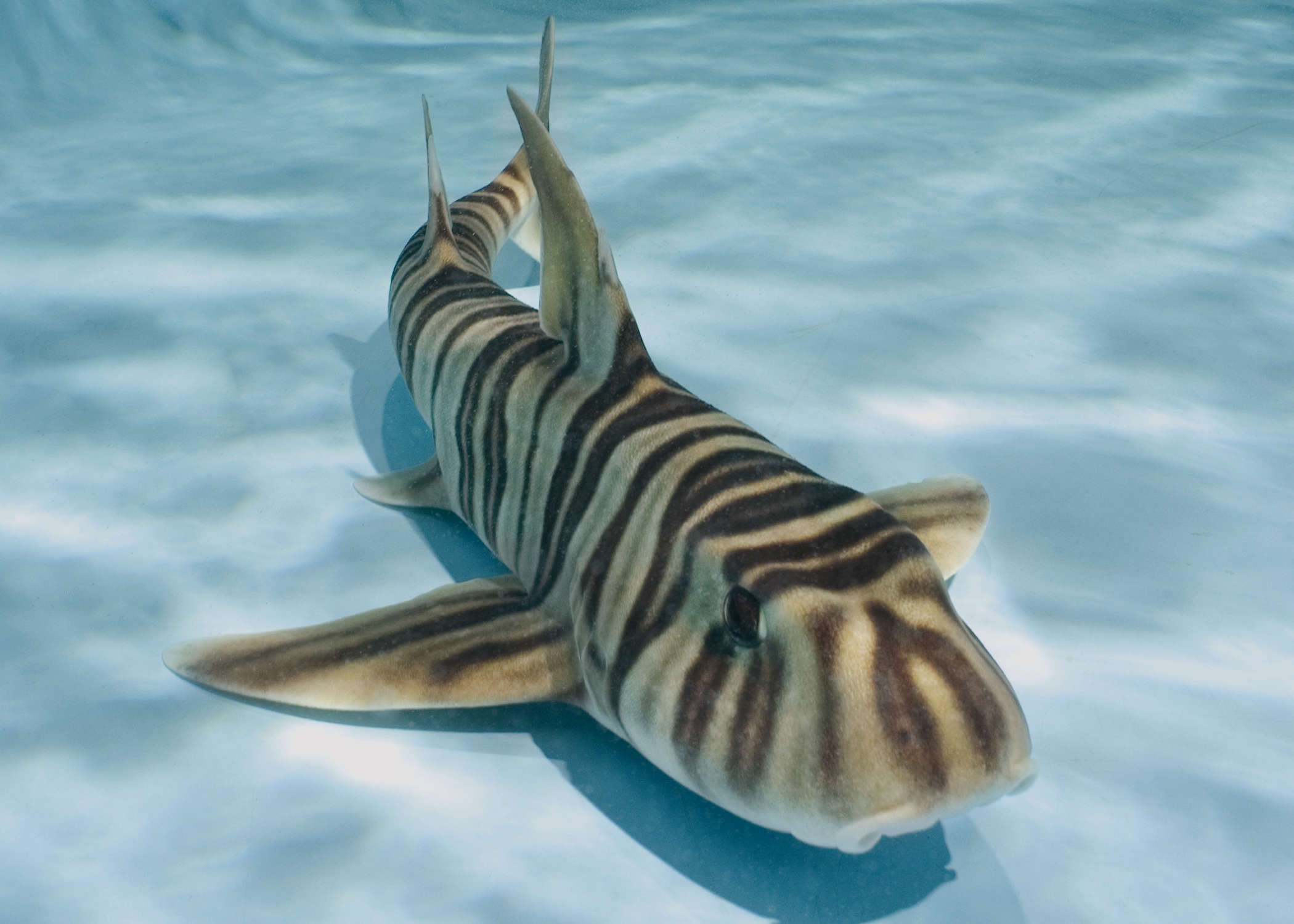
The Zebra Bullhead Shark has a stocky body with distinctive dark brown vertical bands on a lighter background, a large head with ridges above the eyes, and an almost pig-like snout.
It possesses two dorsal fins with prominent spines, specialized sensory organs for detecting electrical impulses from prey, and a muscular pharynx for creating suction to capture food.
| Scientific Name | Heterodontus zebra |
| Origin | Western Pacific |
| Habitat | Rocky reefs and sandy bottoms in the waters around Japan, Korea, and China |
| Fun Fact | These sharks lay corkscrew-shaped egg cases that wedge into rock crevices for protection. |
26. Zebra Waxbill
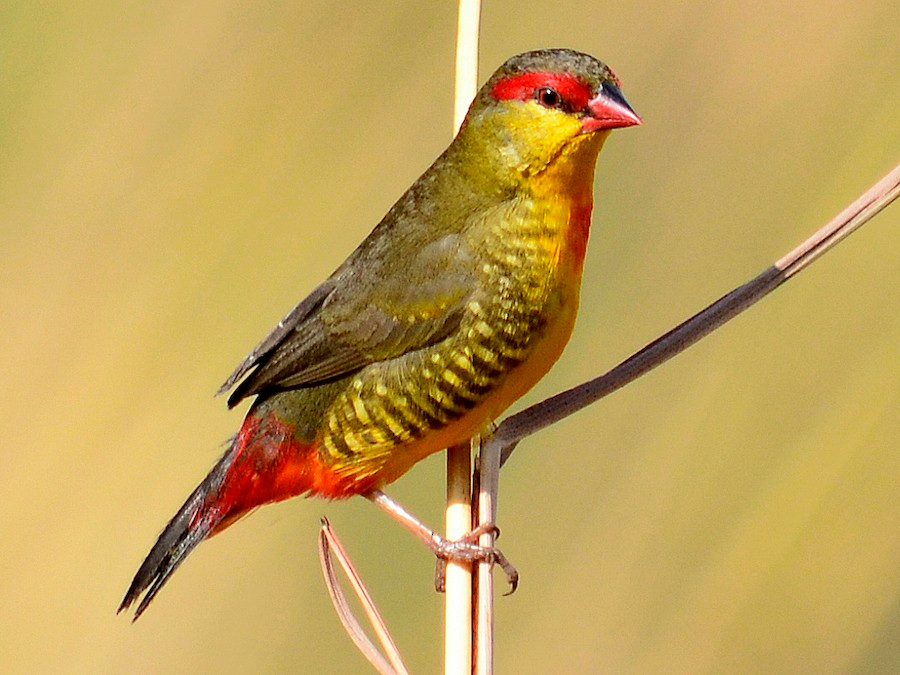
The Zebra Waxbill is a tiny finch with distinctive black and white barring on its flanks, a bright red beak, and a facial pattern featuring a red eyestripe and black mask.
It has a rounded body, short tail, and specialized bill for hulling and eating grass seeds.
| Scientific Name | Amandava subflava |
| Origin | Africa |
| Habitat | Grasslands, marshes, and savanna across sub-Saharan Africa |
| Fun Fact | These birds build dome-shaped nests with side entrances, often incorporating snakeskin to deter predators. |
27. Zambezi Flapshell Turtle
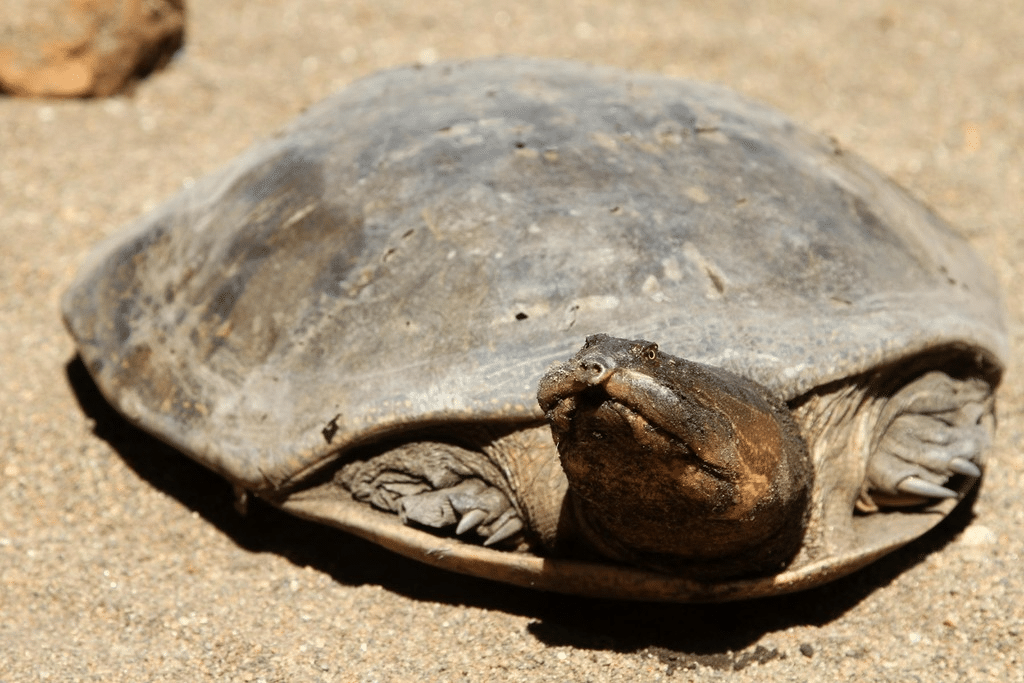
The Zambezi Flapshell Turtle has a flat, oval shell with flexible edges and skin flaps that can completely seal its body within its shell when threatened.
It possesses webbed feet for efficient swimming, a long neck that can retract in an S-curve, and specialized skin that allows oxygen absorption underwater.
| Scientific Name | Cycloderma frenatum |
| Origin | Africa |
| Habitat | Zambezi River and its tributaries in southeastern Africa |
| Fun Fact | It can stay underwater for hours by absorbing oxygen through specialized skin patches. |
28. Zapata Sparrow
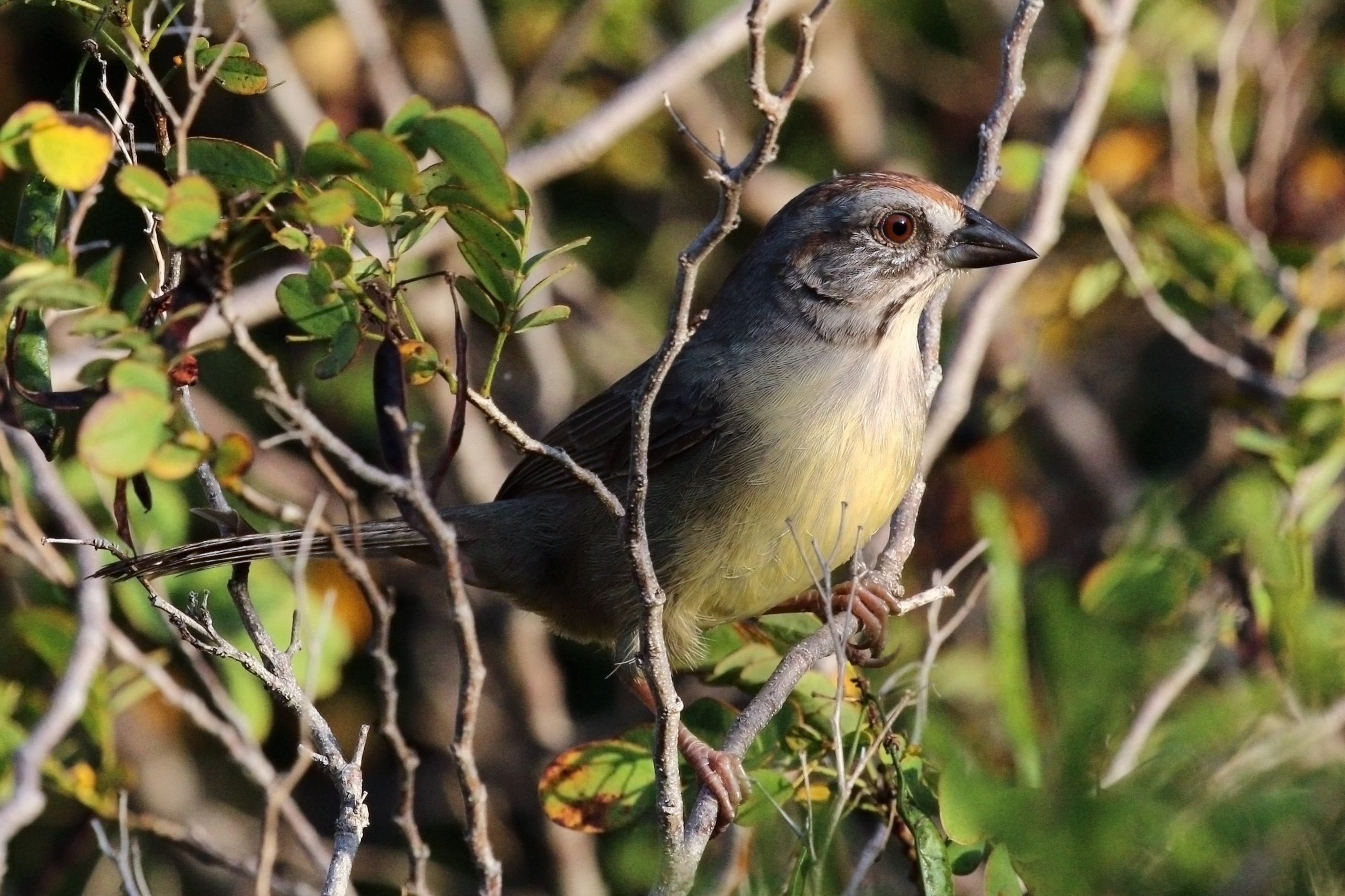
The Zapata Sparrow has olive-brown upperparts, grayish underparts, a rusty crown, and a distinctive striped head pattern with a white eyering.
It possesses a short, conical bill adapted for eating seeds and insects, and strong legs suited for foraging on the ground and in low vegetation.
| Scientific Name | Torreornis inexpectata |
| Origin | Cuba |
| Habitat | Swamps, coastal areas, and scrublands in specific regions of Cuba |
| Fun Fact | It wasn’t discovered until 1926 and then wasn’t seen again for 43 years, leading many to believe it had gone extinct. |
29. Zander
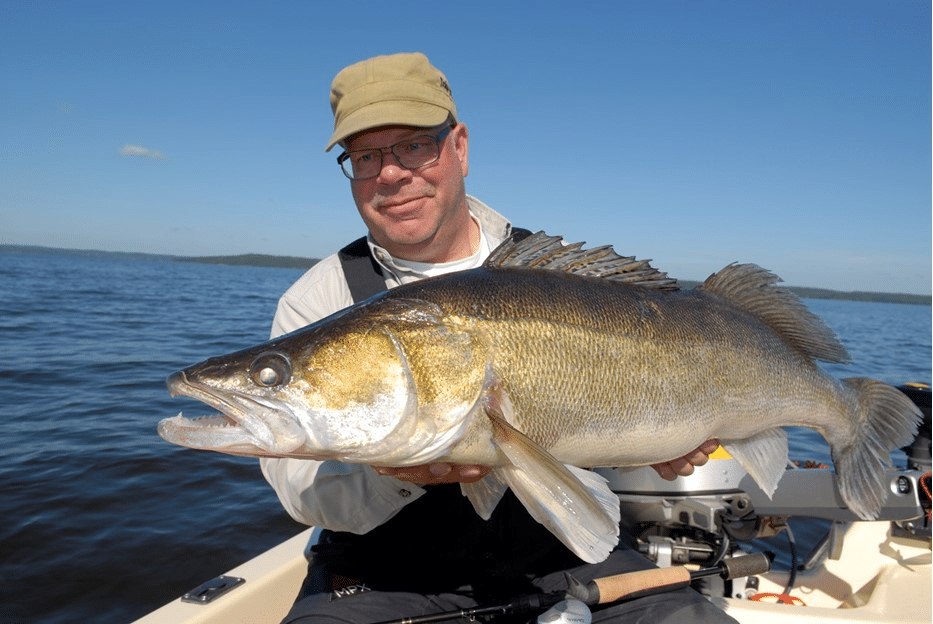
The Zander is a large predatory fish with an elongated body, greenish-gray back with darker bands or blotches, and a white to yellow belly.
It possesses large, glassy eyes with reflective layers that enhance vision in low-light conditions, and impressive canine teeth specialized for gripping struggling prey.
| Scientific Name | Sander lucioperca |
| Origin | Europe and Asia |
| Habitat | Lakes, rivers, and brackish waters across Europe and western Asia |
| Fun Fact | It can see and hunt effectively in extremely murky water thanks to specialized light-reflective eye tissue. |
30. Zanj Sun Squirrel
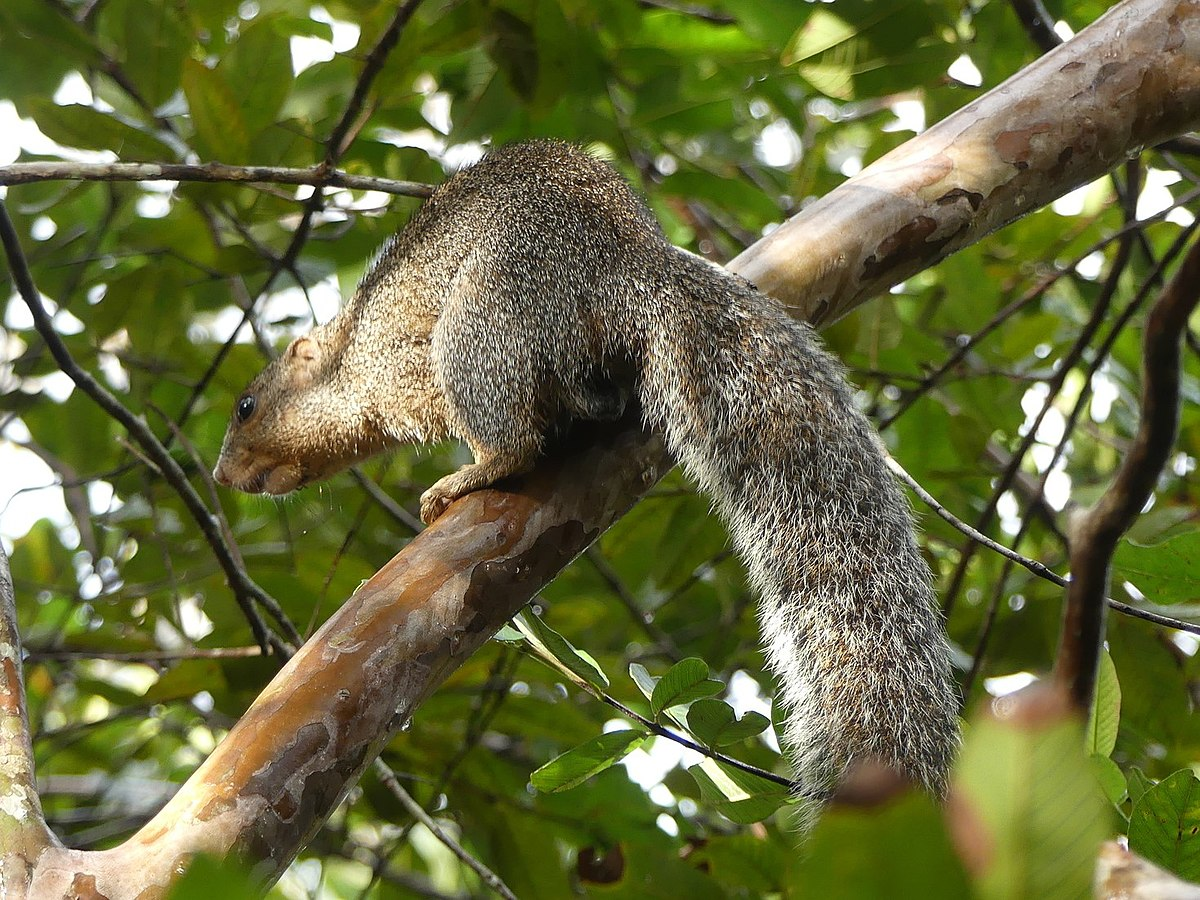
The Zanj Sun Squirrel has a sleek body with olive-green to reddish-brown fur on its back, a distinct white strip running along its side, and a creamy underside.
It possesses large eyes, sharp claws for climbing, and a bushy tail used for balance and communication.
| Scientific Name | Heliosciurus undulatus |
| Origin | East Africa |
| Habitat | Forests and woodlands in Tanzania and Kenya |
| Fun Fact | They’re able to rotate their ankles 180 degrees, allowing them to descend trees headfirst. |
31. Zitting Cisticola
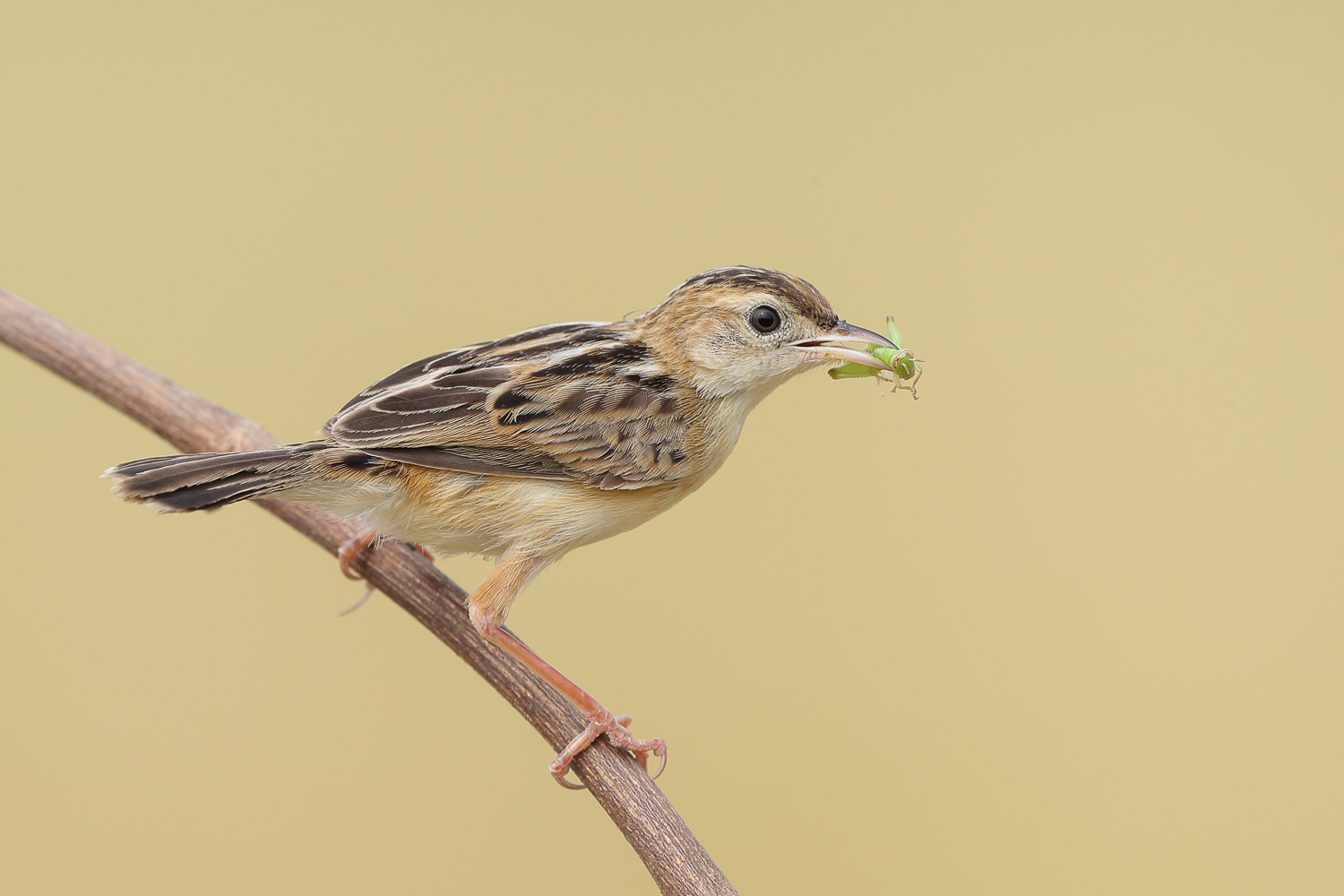
The Zitting Cisticola is a tiny warbler with streaked brown upperparts, buff underparts, and a short, rounded tail that shows white tips when spread during display flights.
It produces a distinctive “zitting” call in flight, which gives the bird its common name, and constructs remarkably intricate pouch nests sewn together from living plant leaves.
| Scientific Name | Cisticola juncidis |
| Origin | Europe, Africa, Asia, and Australia |
| Habitat | Grasslands, marshes, and agricultural areas across multiple continents |
| Fun Fact | Males perform spectacular “zitting” display flights, rising up to 30 feet before zigzagging back down. |
32. Zosterops
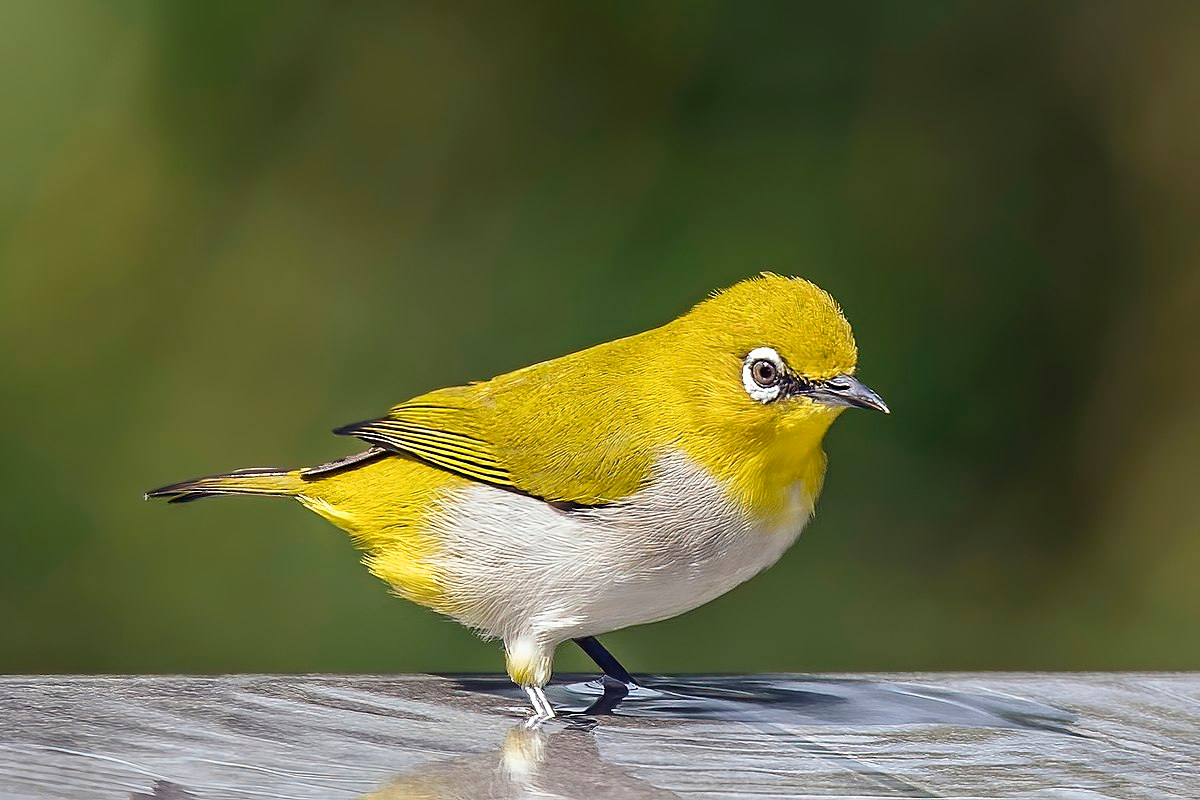
The Zosterops, or White-eye, is a small bird with olive-green upperparts, yellow throat, and the distinctive white ring around each eye that gives the genus its name.
It has a slender, pointed bill specialized for nectar feeding and insect catching, and gregarious behavior that leads to foraging in noisy flocks.
| Scientific Name | Zosterops spp. |
| Origin | Africa, Asia, and Oceania |
| Habitat | Forests, woodlands, and gardens across the tropics and subtropics |
| Fun Fact | These birds are champion island colonizers, capable of establishing populations across vast oceanic distances. |
33. Zingel
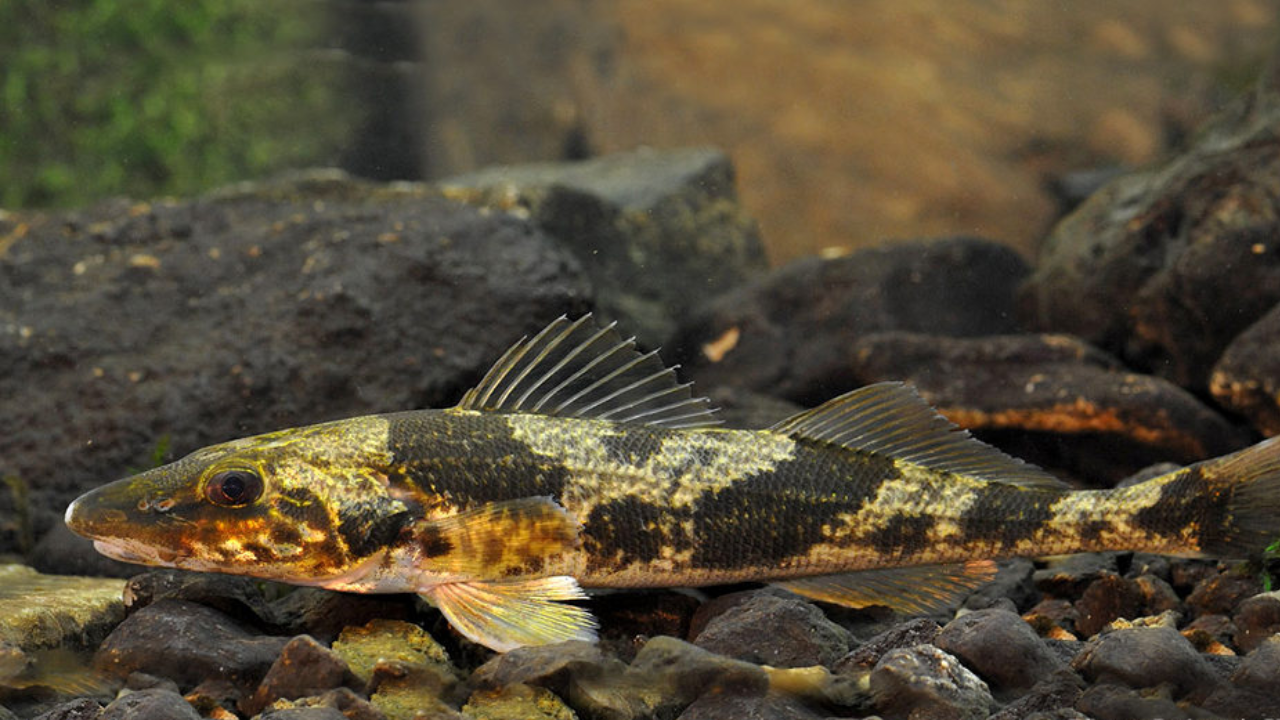
The Zingel is a slender, elongated fish with a cylindrical body, mottled brown coloration providing excellent camouflage, and a distinctive pointed snout.
It has specialized fin structures adapted for maintaining position in strong currents, and sensory organs for detecting prey vibrations in murky riverbed environments.
| Scientific Name | Zingel zingel |
| Origin | Europe |
| Habitat | Fast-flowing sections of the Danube River and its tributaries |
| Fun Fact | They’re nocturnal hunters that remain motionless, partially buried in sand or gravel during daylight hours. |
Less Popular or Rarely Known Animals
34. Zebra Cichlid
The Zebra Cichlid has a compressed oval body marked with bold black vertical stripes on a white-to-blue background and distinctive pointed dorsal and anal fins.
It possesses specialized pharyngeal jaws (a second set of jaws in its throat) for processing food, and exhibits complex parental care behaviors.
| Scientific Name | Maylandia zebra |
| Origin | Africa |
| Habitat | Rocky shores of Lake Malawi in East Africa |
| Fun Fact | Males build and defend sand “castles” to attract females and serve as spawning sites. |
35. Zanj Elephant Shrew
The Zanj Elephant Shrew has a long, flexible snout resembling a tiny elephant trunk, golden-brown fur with a dark stripe down its back, and disproportionately long hind legs.
It possesses specialized foot tendons that store and release energy for explosive jumps, and uses its elongated nose to probe soil and leaf litter for insect prey.
| Scientific Name | Rhynchocyon petersi |
| Origin | East Africa |
| Habitat | Coastal forests in Kenya and Tanzania |
| Fun Fact | Despite their name, they’re more closely related to elephants than to true shrews. |
36. Zempoaltepec Deer Mouse
The Zempoaltepec Deer Mouse has soft grayish-brown fur, white feet, a distinctively long tail, and large ears that serve both for hearing and temperature regulation.
It possesses specialized incisors that grow continuously throughout its life, and remarkably adaptable metabolism that allows survival in high-altitude environments.
| Scientific Name | Peromyscus difficilis |
| Origin | Mexico |
| Habitat | High-altitude cloud forests on Mount Zempoaltepec in Oaxaca, Mexico |
| Fun Fact | They can survive at elevations over 10,000 feet where oxygen levels are significantly lower. |
37. Zenkerella
The Zenkerella is a rare squirrel-like mammal with dense gray-brown fur, a bushy tail with distinctive scales on its underside, and a stocky body adapted for arboreal life.
It possesses specialized ankles that allow for exceptional climbing ability, and unlike its close relatives, lacks the skin membranes used for gliding.
| Scientific Name | Zenkerella insignis |
| Origin | Central Africa |
| Habitat | Dense rainforests of Cameroon, Equatorial Guinea, and Central African Republic |
| Fun Fact | Often called a “living fossil,” its lineage has remained virtually unchanged for over 30 million years. |
38. Zeuneria
The Zeuneria katydid has a remarkably leaf-like appearance with bright green coloration, veined textures mimicking leaf structures, and flattened appendages that complete the disguise.
It possesses extremely long antennae for detecting vibrations and airborne chemicals, and specialized hearing organs located on its front legs.
| Scientific Name | Zeuneria melanopeza |
| Origin | Africa |
| Habitat | Tropical forests of central and western Africa |
| Fun Fact | Their leaf mimicry is so perfect that even their leg joints resemble leaf damage or disease spots. |
39. Ziebell’s Handfish
Ziebell’s Handfish has a flattened, warty body with bright red-orange coloring and white spots, and uses hand-like fins to “walk” on the seafloor.
It features a lure on its head for attracting prey, foot-like pelvic fins, and no swim bladder, keeping it anchored to the seabed.
| Scientific Name | Brachiopsilus ziebelli |
| Origin | Australia |
| Habitat | Coastal waters of southeastern Australia, particularly Tasmania |
| Fun Fact | They “walk” rather than swim, using their modified fins to move across the ocean floor. |
40. Zigzag Salamander
The Zigzag Salamander has a slender body with a distinctive wavy or zigzag pattern down its back, typically in contrasting colors of red or yellow against a darker background.
It possesses specialized skin that must remain moist for gas exchange, a prehensile tail for climbing and balance, and the ability to shed and regenerate its tail when threatened.
| Scientific Name | Plethodon dorsalis |
| Origin | North America |
| Habitat | Moist woodlands and forests in the southeastern United States |
| Fun Fact | They lack lungs and breathe entirely through their moist skin and mouth lining. |
41. Zill’s Monkey
Zill’s Monkey has a sleek body with olive-green back fur, a distinctive white beard, and a long tail used for balance while traversing the forest canopy.
It possesses powerful limbs adapted for arboreal movement, specialized cheek pouches for storing food, and exhibits complex social behaviors within its troop structure.
| Scientific Name | Cercopithecus petaurista zilli |
| Origin | West Africa |
| Habitat | Rainforests and secondary forests in Ghana, Ivory Coast, and neighboring countries |
| Fun Fact | They use over 30 distinct vocal calls to communicate different types of threats to their troop. |
42. Zinkana
The Zinkana is a rare rodent with soft, dense fur ranging from gray to brown, a rounded body with relatively short tail, and specialized teeth for plant material.
It possesses powerful digging forelimbs, a heightened sense of smell for finding food underground, and adaptations for conserving water in its arid habitat.
| Scientific Name | Zinkana species |
| Origin | Middle East |
| Habitat | Rocky hillsides and sparse scrubland in isolated pockets of the Middle East |
| Fun Fact | This elusive rodent was only formally described in the late 20th century and remains poorly studied. |
43. Zodiolestes
Zodiolestes was a prehistoric carnivorous mammal with a long, muscular body similar to today’s martens, powerful jaws with specialized crushing molars, and sharp claws for capturing prey.
Fossil evidence indicates it possessed adaptations for both terrestrial and arboreal movement, with flexible ankle joints and a moderately long tail for balance.
| Scientific Name | Zodiolestes daimonelixensis |
| Origin | North America |
| Habitat | Woodlands and plains of what is now Nebraska and neighboring states during the Miocene epoch |
| Fun Fact | Their fossils are often found in preserved spiral burrows created by ancient beavers. |
I’ll continue with the next 20 animals in the “Z” list, maintaining the same concise format:
44. Zooplankton
Zooplankton comprises countless microscopic and near-microscopic animals that drift in water bodies, ranging from simple protozoans to larval forms of larger animals.
They possess various specialized adaptations for floating, including oil droplets for buoyancy, transparent bodies for camouflage, and feeding structures for filtering microscopic food particles.
| Scientific Name | Various (includes numerous species) |
| Origin | Global oceans and freshwater systems |
| Habitat | All aquatic environments from surface waters to abyssal depths |
| Fun Fact | They perform the largest synchronized migration on Earth, moving toward surface waters at night and deeper waters during day. |
45. Zoanthid
Zoanthids are colonial marine organisms with fleshy polyps arranged in clusters, vibrant coloration ranging from neon greens to purples, and tentacles surrounding a central mouth.
They possess specialized stinging cells called nematocysts, symbiotic relationships with photosynthetic algae, and the ability to reproduce both sexually and asexually.
| Scientific Name | Zoanthus spp. |
| Origin | Tropical and subtropical waters worldwide |
| Habitat | Coral reefs, rocky substrates, and sometimes even growing on other organisms |
| Fun Fact | Many species produce palytoxin, one of the most potent natural toxins known to science. |
46. Zonopterus
The Zonopterus beetle has an elongated body with striking metallic coloration, distinctive bands across its wing covers, and extraordinarily long antennae that can exceed its body length.
It possesses powerful mandibles for chewing wood, specialized feet with adhesive pads for climbing smooth surfaces, and chemical defenses that make it unpalatable to predators.
| Scientific Name | Zonopterus species |
| Origin | Southeast Asia |
| Habitat | Tropical forests of Malaysia, Indonesia, and neighboring regions |
| Fun Fact | Their larvae can spend years developing inside wood before emerging as adults that live just a few weeks. |
47. Zorapteran
Zorapterans are tiny insects, about 3mm long, with soft bodies, clubbed antennae, and both winged and wingless forms.
They have specialized mouthparts for eating fungal spores and hyphae, and compound eyes present only in winged individuals.
| Scientific Name | Zorotypus species |
| Origin | Worldwide tropics and subtropics |
| Habitat | Decaying wood, leaf litter, and termite nests in humid environments |
| Fun Fact | They’re so rarely encountered that more species have been described from amber fossils than living specimens. |
48. Zoocids
Zoocids are colonial marine bryozoans that build lace-like calcium carbonate structures, with each zooid housed in its own tiny chamber.
They use lophophores to filter food, have defenses like spines and protective zooids, and can regenerate damaged parts of the colony.
| Scientific Name | Various Cheilostomata species |
| Origin | Worldwide oceans |
| Habitat | Attached to rocks, shells, seaweeds, and artificial structures in marine environments |
| Fun Fact | Though each individual is microscopic, their colonies can grow to cover several square feet. |
49. Zygentoma
Zygentoma, including silverfish, are primitive wingless insects with carrot-shaped bodies covered in silvery scales, three long tail projections, and long antennae.
They possess specialized enzymes for digesting cellulose and starch, remarkable longevity compared to most insects, and continued molting throughout their adult lives.
| Scientific Name | Various including Lepisma saccharina |
| Origin | Worldwide |
| Habitat | Dark, humid environments from human dwellings to forest floors and caves |
| Fun Fact | Unlike most insects, they continue to molt throughout their lives, sometimes living 8+ years. |
50. Zygodactylus
Zygodactylus was a prehistoric bird with specialized foot structure featuring two toes pointing forward and two backward (zygodactyl arrangement), a short, robust bill, and wings adapted for agile forest flight.
Fossil evidence suggests it possessed climbing abilities similar to modern woodpeckers, with skeletal adaptations supporting its specialized feeding and nesting behaviors.
| Scientific Name | Zygodactylus species |
| Origin | Europe and North America |
| Habitat | Forests during the Eocene and Oligocene epochs, 56-23 million years ago |
| Fun Fact | They represent an entirely extinct bird family that was once widespread across the Northern Hemisphere. |
51. Zygodontomys
Zygodontomys mice have sturdy bodies with coarse brown fur, short tails, and strong front claws for digging.
They have uniquely crowned teeth for chewing tough plants, sharp night vision, and reproductive traits that support quick population growth.
| Scientific Name | Zygodontomys brevicauda |
| Origin | South and Central America |
| Habitat | Grasslands, agricultural areas, and forest edges from Panama to northern South America |
| Fun Fact | They’re sometimes called “cane mice” because of their ability to thrive in sugarcane fields. |
52.Zamurito Catfish
The Zamurito Catfish has a flattened head, smooth scaleless skin with a mottled pattern of dark spots on a lighter background, and prominent barbels around its mouth.
It possesses specialized pectoral fins with spines that can be locked into position as a defense mechanism, and a highly developed sense of smell for locating food in murky water.
| Scientific Name | Calophysus macropterus |
| Origin | South America |
| Habitat | Large rivers in the Amazon and Orinoco basins |
| Fun Fact | It has switched from scavenging to actively hunting after learning to follow boats for discarded fish. |
53. Zyxomma
The Zyxomma dragonfly has a slender brown-gray body, large eyes that meet at the top of its head, and wings that stay outstretched when resting.
It hunts in low light using specialized vision, has precise flight control for catching prey mid-air, and its aquatic larvae are fierce freshwater predators.
| Scientific Name | Zyxomma petiolatum |
| Origin | Asia, Australia, and Africa |
| Habitat | Around ponds, lakes, and slow-moving streams in forested areas |
| Fun Fact | These “dusk flyers” hunt primarily at dawn and dusk when other dragonflies are inactive. |
54. Zingiberaceae Moth
The Zingiberaceae Moth has delicate brown-gray wings, feeds on ginger family flowers, and features raised scale tufts on its forewings.
It has highly sensitive scent receptors, a long proboscis for tubular nectar, and strong night vision for nocturnal foraging.
| Scientific Name | Endoclita spp. |
| Origin | Southeast Asia |
| Habitat | Tropical forests where plants of the ginger family (Zingiberaceae) grow |
| Fun Fact | Their larvae bore into ginger plant stems, becoming a significant agricultural pest for spice farmers. |
55. Zapus
Zapus jumping mice have slender bodies with very long hind feet and tails, distinctly bi-colored fur with darker backs and lighter undersides, and large ears.
They possess specialized hind leg tendons that store energy like springs, allowing them to make explosive leaps up to 10 times their body length when escaping predators.
| Scientific Name | Zapus hudsonius |
| Origin | North America |
| Habitat | Grassy fields, meadows, and forest edges across Canada and the northern United States |
| Fun Fact | They’re true hibernators, spending up to 8 months of the year in a state of suspended animation underground. |
56. Zhuang Pika
The Zhuang Pika is a small, rabbit-like mammal with short ears, no visible tail, and dense gray-brown fur for mountain camouflage.
It has ever-growing incisors, high-altitude oxygen adaptations, and stores food in “haypiles” to survive winter.
| Scientific Name | Ochotona zhuangi |
| Origin | Asia |
| Habitat | High-altitude rocky slopes in the mountains of northwestern China |
| Fun Fact | They emit high-pitched warning calls that earned them the nickname “whistling hares.” |
57. Zaire Dwarf Gecko
The Zaire Dwarf Gecko is a tiny lizard under two inches long, with patterned brown-gray skin and large eyes suited for night vision.
Its toe pads have microscopic hairs that create molecular grip, letting it climb vertical and even upside-down surfaces.
| Scientific Name | Lygodactylus zairei |
| Origin | Central Africa |
| Habitat | Trees and rocky outcrops in tropical forests of the Democratic Republic of Congo |
| Fun Fact | Despite their small size, males aggressively defend territories with elaborate threat displays. |
58. Zubron
The Zubron is a hybrid with the muscular build of a bison, the straighter face and long legs of cattle, and a coat blending both parent species.
It’s cold-hardy, disease-resistant, and can digest low-quality forage, merging strengths from both wild and domestic lineages.
| Scientific Name | Bos taurus × Bison bonasus |
| Origin | Poland (created through managed breeding) |
| Habitat | Managed reserves and breeding facilities in Eastern Europe |
| Fun Fact | They were created in Poland as a potential meat animal for harsh environments where cattle couldn’t thrive. |
59. Zanzibari Leopard
The Zanzibari Leopard had a more compact body than mainland leopards, distinctive closely-packed rosette markings, and adaptations for hunting in the island’s dense vegetation.
It possessed exceptional climbing abilities with powerful shoulder muscles, specialized night vision, and remarkably silent movement adaptations for ambush hunting.
| Scientific Name | Panthera pardus adersi |
| Origin | Zanzibar, Tanzania |
| Habitat | Forests and thickets of Unguja island (Zanzibar) |
| Fun Fact | Local witch doctors were believed to keep these leopards as pets, contributing to their feared reputation. |
60. Zenaida
Zenaida doves have plump bodies with soft gray-brown plumage, distinctive black spots on their wings, and iridescent patches on their necks that shimmer purple and green in sunlight.
They possess specialized crops for storing and partially digesting seeds, melodious cooing calls used in courtship, and strong, direct flight adaptations.
| Scientific Name | Zenaida spp. |
| Origin | North, Central, and South America |
| Habitat | Various habitats from woodlands to urban parks across the Americas |
| Fun Fact | Unlike many birds, they drink by immersing their bills and sucking water up rather than scooping and tilting their heads back. |
61. Zetek’s Tree Frog
Zetek’s Tree Frog has bright green dorsal coloration with subtle yellow flecks, a white underside, and large adhesive toe pads for climbing in its arboreal habitat.
It possesses specialized skin that can absorb water directly, vocal sacs that inflate dramatically during mating calls, and remarkable jumping abilities for navigating the forest canopy.
| Scientific Name | Smilisca zetek |
| Origin | Central America |
| Habitat | Tropical rainforests from Costa Rica to Colombia |
| Fun Fact | Their tadpoles develop in water-filled tree cavities rather than in ponds or streams. |
62. Zographus Beetle
The Zographus beetle has a robust body with striking patterns of contrasting white or yellow markings on a black background, exceptionally long antennae, and powerful mandibles.
It possesses specialized feet for gripping bark, wood-boring larvae that develop inside trees, and chemical defenses that make it unpalatable to predators.
| Scientific Name | Zographus species |
|---|---|
| Origin | Africa |
| Habitat | Tropical forests across sub-Saharan Africa |
| Fun Fact | Their bold, high-contrast patterns serve as warning coloration, advertising their toxicity to potential predators. |
63. Zoothera
Zoothera thrushes have speckled brown feathers that blend into forest floors, strong legs for ground foraging, and a unique habit of flipping leaves to find prey.
They have keen hearing for detecting hidden invertebrates, sensitive bill tips for touch-based foraging, and melodious songs that are rarely heard.
| Scientific Name | Zoothera species |
|---|---|
| Origin | Asia, Africa, and Australasia |
| Habitat | Forest floors and understory across their range |
| Fun Fact | Many species are extremely secretive, with some only being documented a handful of times by scientists. |
64. Zonotrichia
Zonotrichia sparrows have distinctive head patterns featuring bold black and white stripes, brown-streaked backs, and clear, melodious songs used for territory defense.
They possess specialized bills adapted for both seed-cracking and insect-catching, seasonal migration capabilities, and remarkable spatial memory for food storage locations.
| Scientific Name | Zonotrichia species |
| Origin | North and South America |
| Habitat | Various habitats from Arctic tundra to South American highlands depending on species |
| Fun Fact | The White-crowned Sparrow in this genus can learn its song during a critical period of just 30 days in its youth. |
65. Zaretis
Zaretis leafwing butterflies have remarkable leaf mimicry with wings shaped like leaves including midribs and veins, typically in orange-brown coloration, and a distinctive “tattered” wing edge resembling leaf damage.
They possess rapid, erratic flight patterns that suddenly transform into perfect stillness upon landing, enhancing their disguise among real leaves.
| Scientific Name | Zaretis species |
|---|---|
| Origin | Central and South America |
| Habitat | Tropical and subtropical forests from Mexico to Brazil |
| Fun Fact | When resting, they hold their wings together, allowing veins and stem-like structures to complete their leaf disguise. |
66. Zygaena
Zygaena day-flying moths have vibrant metallic blue-black wings adorned with bold red spots that warn of their toxicity, stout bodies, and club-shaped antennae unlike typical moths.
They possess specialized metabolic pathways that allow them to synthesize hydrogen cyanide from plants they consume, making them unpalatable to predators.
| Scientific Name | Zygaena species |
| Origin | Europe, Asia, and North Africa |
| Habitat | Grasslands, meadows, and open woodlands throughout their range |
| Fun Fact | Unlike most moths, they’re active during the day and can contain enough cyanide compounds to kill a small bird. |
Wrapping It Up
The “z” Animals May Conclude the Alphabet, but They Certainly Don’t Represent Nature’s Afterthoughts.
These remarkable creatures showcase evolution’s finest work—specialized adaptations that allow them to thrive in their special ecological niches.
From the fleet-footed Zebra outrunning predators to the tiny Zebra Finch’s complex songs encoding crucial survival information, these animals show nature’s endless ingenuity.
The Zonkey’s hybrid vigor, the Zebu’s heat resistance, and the Zokor’s subterranean engineering remind us how much variety exists even within this limited letter group.
Which “Z” animal surprised you most? Tell us in the comments below! Have you ever spotted one of these “Z” creatures in the wild? Share your experience!

